Ah, 2013… to say it was a “simpler time” is, well, oversimplifying things. But in the music world at least, things seemed positive. Streaming’s proliferation was bringing people back into touch with their music taste, and we hadn’t really paid attention to the unfair remuneration deals behind it. Social media seemed like a fun and casual way of self-promoting – TikTok was still several years away, as was the era of expected maximum engagement. Certain cherished stars of the indie and mainstream worlds hadn’t yet embarked upon legacy-tainting actions.
It was also a time of excitement for music. The biggest pop stars in the world successfully transitioned from chart domination to critical darlings. A prodigiously talented rapper made good on the anticipation that had been building during his time in exile. A black metal band had crossover success and earned millions of fans. Reclusive geniuses returned after an eight year absence with a new full-length, renowned perfectionists released their first album since the 90s and a certain legend resurfaced to deliver his first long-player in a decade.
For us at BPM, it was the year we decided to go on hiatus before returning during the 2020 lockdown, so we never got to do our annual best of the year list. Looking back 10 years saw a wealth of albums and memories pouring forth among the team, and singling out a handful for retrospective praise was constricting. Instead we’ve picked 50 of the best from a year that punched well above its weight for classic albums.
We’ve opted to publish them in alphabetical order rather than a ranking, as they’ve all come to hold a cherished place over the course of the last 10 years, and pitting them against each other seems pointless. Enjoy the list below.
Listen to a Spotify playlist of our top track from each album.
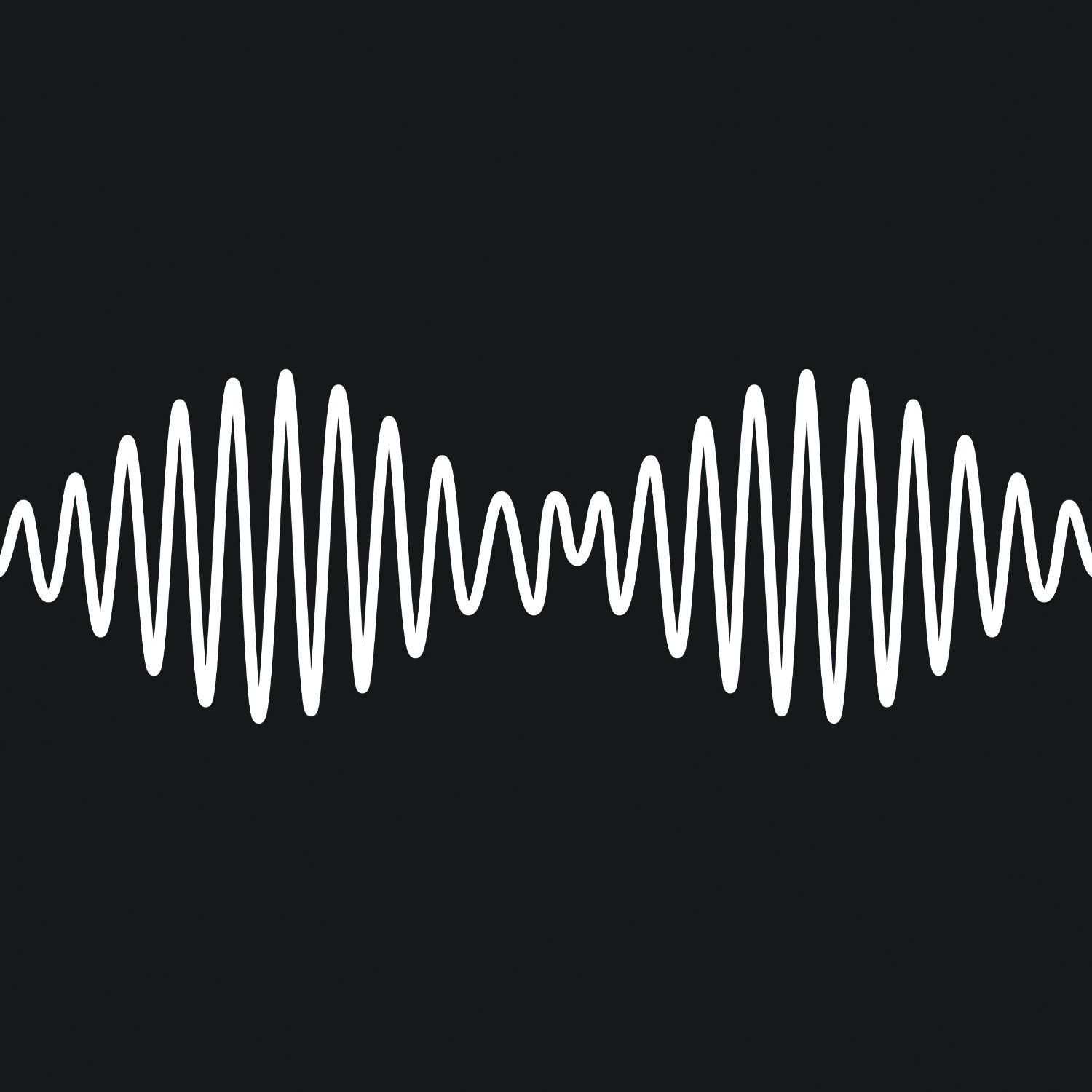
Arctic Monkeys – AM
[Domino]
Perhaps one of the most impressive qualities of Arctic Monkeys is their ability to adopt and consistently sustain a new mood or style on each of their albums. If their debut was somewhat of a cross between The Strokes and The Libertines, follow-up Favourite Worst Nightmare was something wholly its own in heavy and at times spooky British alternative music; Humbug was a venture into the friendlier indie sound of the time; and Suck It And See showed a surf-rock even rockabilly leanings, then AM is their first turn into entirely new territory: blues rock mixed with pop catchiness.
While this album was the one that transferred the Sheffield quartet from indie popularity to world-wide recognition, its sound was never going to be Arctic Monkeys’ new staple (see Tranquility Base Hotel & Casino), which makes it all the more valuable. The band fronted by guitarist and vocalist Alex Turner proved that they could come up with a Grammy-ready album solely as their creative choice rather than this being the culmination of years of effort. The album focuses on a failing relationship and ties it around danceable rhythms as well as melancholic entries, such as “No. 1 Party Anthem” or “Mad Sounds”. As it turned out after the release of Arctic Monkeys’ next album, these tracks not only brought diversity into the sound of AM, but also stylistically heavily hinted at what was to come. It is truly impressive and exciting that the listeners would not have been able to guess that it is these softer tracks that will be route the band takes later one, as opposed to the arena-anthems, such as “Do I Wanna Know?” and “R U Mine?” – Aleksandr Smirnov

Autre Ne Veut – Anxiety
[Software/Mexican Summer]
There’s something oddly joyful about Anxiety, the second album by Arthur Ashin’s Autre Ne Veut project (not counting his “lost” album kingofpop); his take on alternative RnB is unabashedly sincere but also shot-through with a post-modern spirit, particularly in its production. The sound of Anxiety embraces 80s kitsch and an ADHD spirit in the same way that vaporwave was doing around the same time. The production is constantly threatening to destabilise the song we’re listening to; not in a depressing, mind-fragmenting way, but rather in a manner that’s indicative of spontaneity and vitality, and the thrill of being at the edge of losing control and falling apart.
For what is at passing glance a coldly electronic record, this is music that’s electrifyingly alive. Daniel Lopatin of Oneohtrix Point Never (and Ashin’s erstwhile college room-mate) assisted with the recording of Anxiety and there are synth sounds and countless moments that recall his work on the same year’s R Plus Seven. But central to the success of Anxiety is the magnetic vocal performance of Ashin himself; his falsetto pierces, his knack for melody and melodrama is unmatched, the emotion he conveys is confronting and uncomfortable but riveting. Revisiting this album 10 years later confirms that Autre Ne Veut’s relative absence from the musical landscape since (only one full length album has been released in the interim) has been our loss. Anxiety is a masterpiece of 21st century pop and deserves to revered play by play by play. – Andy Johnston
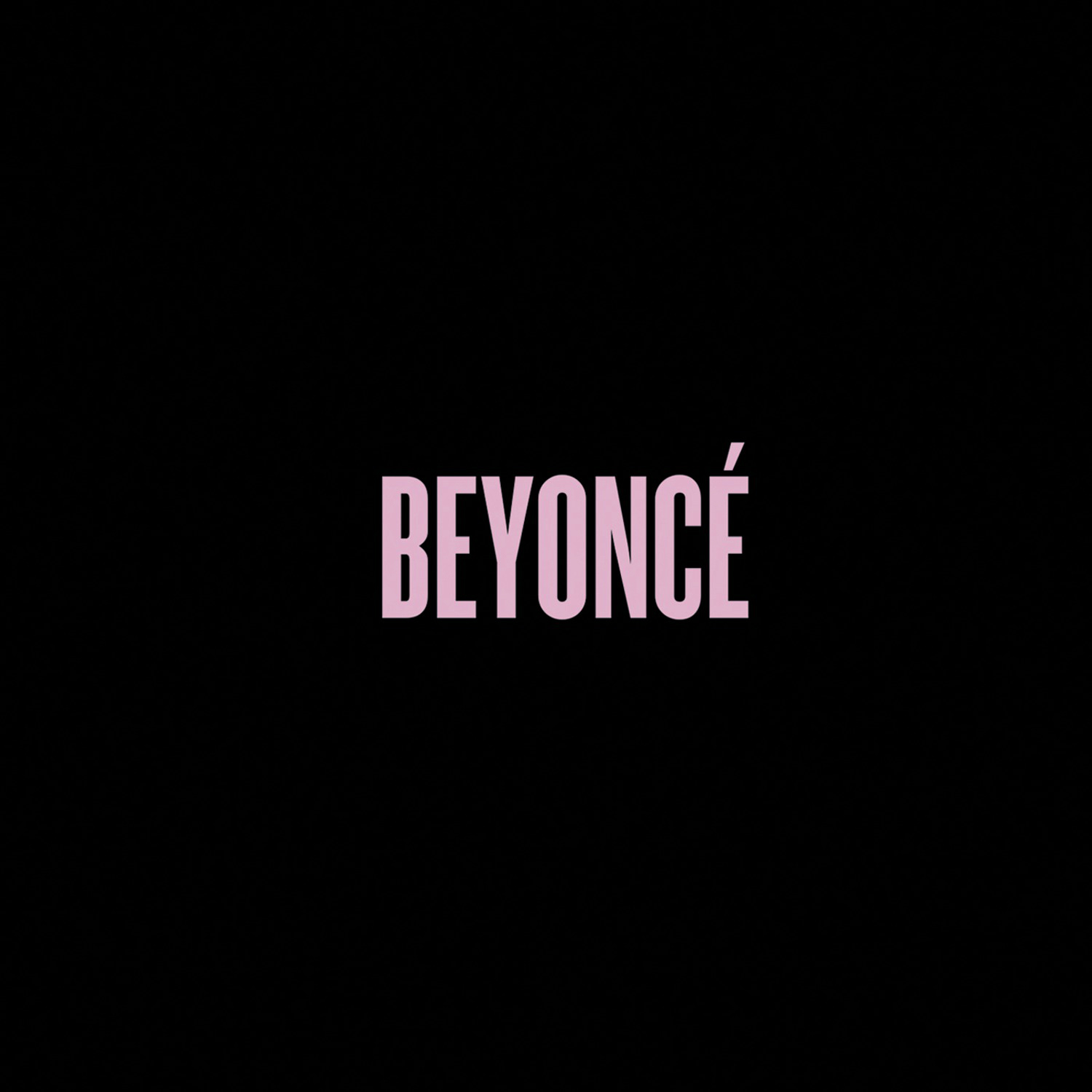
Beyoncé – Beyoncé
[Columbia]
After the creative adjustment of 2011’s 4, Beyoncé hit back even harder with her self-titled album, a collection of mutated R&B, lush hip-hop, and expansive pop songs that further channeled her affection for boundless genre-hopping. It allowed her to be free from our expectations as well as any impulses that might have carried over from previous releases. With this album, she wasn’t simply exploring the known contours of these aesthetics but aimed to warp them in ways previously unimagined. Her marriage to Jay-Z and her own sense of empowerment led the charge here, pushing past staid statements of identity and fashioning whole worlds from these musical elements. Each song was just a link in a chain of creative wonders, forcing her to go deeper into her influences to find the thumping heart that pushed her to make music in the first place.
Beyoncé was all the more remarkable for its unannounced rollout, appearing online in December of 2013 to fans accustomed to long-winded media blitzes and copious singles. But Beyoncé was the antithesis of all that – it was personal, more so than anything she’d done up to that point and marked a turning point in her career. She was no longer just footnote in the history of Destiny’s Child or someone famous for subsequently mixing up R&B and pop lineages. She had become Queen Bey, and she was here to conquer the world. – Joshua Pickard
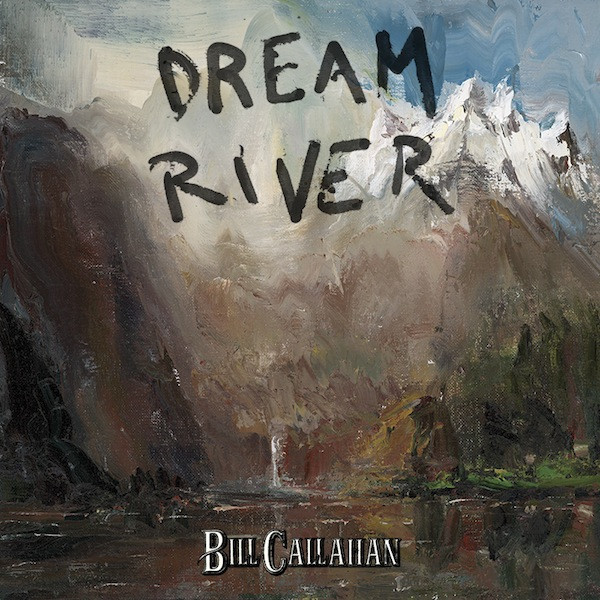
Bill Callahan – Dream River
[Drag City]
Bill Callahan has always been able to find the miraculous in ordinary things. Even prior to dropping the Smog moniker in favor of his given name, his work was littered with grand statements on simple experiences and the ways in which we approach the routine aspects of our lives. No one captures the magic of everyday mundanities quite like he does – and no one else makes it all feel so goddamn relatable.
Dream River is an opus of simplicity and realism, told as only Callahan can, drenched in sardonic wit, revelation, and the love of all things that might come to us in due time. The album feels comfortable sitting next to the works of Gabriel Garcia Marquez and Charles Bukowski, artists whose prose lifted, devastated, and renewed according to unseen impulses. It’s simultaneously the most dynamic he’d been up that point and the most straightforward in terms of narrative complexity. These were not convoluted stories, but they were layered, intricate in their adoration of plainspoken honesty, moments frozen in amber and marked by the lingering smell of daffodils in the spring. Songs like “Javelin Unlanding” and “Winter Road” are exquisite happenstances, gorgeous ruminations riven from natural surroundings and a desire for physical immersion. The music ambles through avenues of folk ancestries amid various stretches of subdued pop and rock interpolation. Dream River is a reverie of tree bark and linnet calls and the sound of joy around an old wooden porch. – Joshua Pickard

Blood Orange – Cupid Deluxe
[Domino]
When Cupid Deluxe landed, Dev Hynes was still known in his native UK as the guy from punk group Test Icicles who had gone all twee with his singer-songwriter follow-up project Lightspeed Champion. In the US, he was nobody. But he decided to switch London for New York and start his definitive new project: Blood Orange.
Of course, there was a Blood Orange album before Cupide Deluxe, 2011’s Coastal Grooves, but in retrospect that album feels like Hynes taking a step away from his former projects, clearing his throat, and starting to figure himself out. It is on the 2013 follow-up when he perfects his Sierra Leone blend of 80s funk, atmospheric jazz and modern soul. It also, crucially, saw him realise his talent as a curator and inviting guests into the project for the first time, which has become a definitive strength of Blood Orange’s work.
Here we have The Dirty Projectors’ Dave Longstreth emoting over a light Afrobeat blend assisted by Clams Casino in “No Right Thing”. Caroline Polachek, years before she’d break out of Chairlift as a star in her own right, lights up the album’s longing and lascivious opener “Chamakay”. Hynes’ delectable production ensures the album’s two rap features from Skepta and Despot transport us across the Atlantic from South London to Queens. Samantha Urbani blossoms throughout the record, emboldening Hynes’ hooks and stories, especially on the mid-album showcase “Only Let U Down”.
But it is Hynes who shines brightest among all of these, as producer, multi-instrumentalist, and storyteller. He set a template on Cupid Deluxe that he has broadened and honed in the following records. He inhabits unseen stories from the streets of his adopted home city, giving glimpses into NYC’s homosexual and hidden scenes.This album more than his subsequent focuses on love and isolation in the Black community, as well as the intermingling complication of faith. A decade on from its release, it has proven to be as timelessly poignant and enjoyable as the stories and sounds it lovingly borrows from. – Rob Hakimian

Boards of Canada – Tomorrow’s Harvest
[Warp]
As the last human dies and the last towers crumble to dust and not even a book is left intact, the ghosts of what we could have been start haunting the dunes of the desert. Boards of Canada‘s Tomorrow’s Harvest is music for the end of everything, the soundtrack of ghosts, sigils of the coming apocalypse. It opens with a seven-note trumpet vignette, like the end of days is rung in by seven angels: a cursed production studio logo. It ends with the disintegrating drones of a calcified synthesiser. In-between lies the group’s most despairing work. Famous for their many clues and riddles hidden within borderline occult compositional techniques, the duo created a mirror reflection in musical form, with the first and last track, the second and penultimate etc. fitting together, one ending where the other begins: a loop of death and decay.
Inspired by the barren synth-film soundtracks of the 70s and 80s, the individual songs are hidden treatises of our deepest fears and grimmest nightmares. “Reach for the Dead” chronicles nuclear explosions. “White Cyclose” includes a helicopter sample from Plague Dogs and references the opening moments of Day of the Dead . “Split Your Infinities” samples paranoid government conspiracies, while “Palace Posy” is both an anagram for “apocalypse” and a reference to the great plague. Wherever the listener turns, there’s nothing but decay and horror, making Tomorrow’s Harvest a speculative work of fiction – or a prophecy – about nuclear winter and the fall of new civilisations. As with Geogaddi, unlocking it means opening doors which are better left shut. But whereas the previous one found a sense of optimism in the opportunities that occultism grants humanity, their to-date latest work is an implicit warning. Its most convincing proof that it stands among the duo’s best work comes in the frightening realisation that they were right: Tomorrow’s Harvest is the soundtrack of this decade. Let us pray. – John Wohlmacher

Chance The Rapper – Acid Rap
[Self-released]
Come for the drugs, stay for the lasting relationships. Like Things Fall Apart and The Chronic before it, an important part of Acid Rap’s legacy will be the careers of everyone it launched: BJ The Chicago Kid, Vic Mensa, Noname, Saba, and Action Bronson. Oh, and label-phobic, Midwest-mannered, good-egg Chance The Rapper.
While Chance’s relentless ah-ah-ah! charm – like a skateboarder on an El platform, high on psychedelics – made him a safer and nicer alternative to Chief Keef or Kanye West, respectively, the real pull of his second mixtape was its effortless collaboration. It’s a backpacker record with a Chicago flag patch ironed on, built for a Lollapalooza debut just three months later with all his friends in the crowd. Drill arose at the same time and darkly mirrored the city’s notorious violence, while the cynicism of the Mayor Emanuel regime pumped development downtown while leaving the ‘hoods scrambling for crumbs. But Acid Rap said that for every bullet that rips through the South Side there is also the ratatatat of kids banging buckets outside Bulls and Sox games. For every generic residential tower rising in the Loop, there are wild monk parakeets nesting in Englewood and Edgewater. The city came together on Acid Rap and did it in Technicolour. – Steve Forstneger

Daft Punk – Random Access Memories
[Columbia]
It would be all too reductive to dismiss Daft Punk’s commercial monolith Random Access Memories as simply the point where the band gave in to their broader pop impulses and delivered an album primarily aimed at conquering most forms of media and raking in truckloads of cash for Thomas Bangalter and Guy-Manuel de Homem-Christo. It certainly was – and did – those things, but it also explored the complexities in how these two musicians attempted to develop an equilibrium with a much wider musical genealogy and how the resultant album seemed to trigger millions of pleasures centers en masse.
From the ubiquitous Pharrell and Nile Rodgers collaboration “Get Lucky”, to the Julian Casablancas-aided earworm “Instant Crush”, the album made no excuses for how it achieved its mainstream aims. But other songs, like “Doin’ It Right” with Panda Bear and the Giorgio Moroder-narrated “Giorgio by Moroder” gave them room to flex their rhythmic ingenuity, building a series of melodic colossi and shifting various tectonic plates in the process. “Contact” ends the album on such a monumental high that everything else is forgotten for those six minutes, eventually coalescing into some faint recognition that maybe, just maybe, Bangalter and Homem-Christo had some inclination that the end was night and decided that they wanted some company out in the far reaches of space, the only place where they truly ever felt at home. – Joshua Pickard

Danny Brown – Old
[Fool’s Gold]
Old is that part of the movie where the poor-kid-done-well begins to question his success. Like Eddie Murphy amid a patchwork of coked-up hangers-on in Trading Places, Danny Brown realizes he should send everyone home from a party he started himself. Well, not entirely.
A handful of twerk tracks aside, Old upends his breakout mixtape XXX by placing the emotional/mental-stability cuts first before backending with festival anthems. Despite collecting impressive friends (A$AP Rocky, Charli XCX, ScHoolboy Q) in XXX’s aftermath, the album’s first feature is fellow Midwestern hustler Freddie Gibbs, and on “The Return” they go straight for the necks of the indie establishment that embraced Brown as their comic-relief fuckboy. At times, Old verges on voyeurism, waiting for Brown to assume the position as ghetto-stereotype/partier-in-chief. At times, he obliges. But it’s not that there are two Danny Browns, just one that’s been split in half. The title isn’t only about trying to mature and magically make it to old age, but how all the trauma from Brown’s past and present is getting old and breaking him. – Steve Forstneger

Darkside – Psychic
[Matador]
Prior to teaming up as Darkside, Chilean producer and multi-instrumentalist Nicolas Jaar had enthralled with his debut album under his own name Space Is Only Noise; a spaced-out collection of sound collages injected with alien funk. NY native Dave Harrington was more of an unknown, having been a member of various psych projects and jazz acts. But for both, it was Psychic that put them on the map and it remains one of the definitive projects in either’s catalogue,
The opening minutes of Psychic almost sound like the two of them cooking up some kind of cosmic pact or opening a wormhole to a new dimension. The 11-minute “Golden Arrow” unfolds in distinct sections, from the matter-creating drone of the opening, into the big bang of a modulated synth bass that emerges out of the dust and pulls Darkside’s sonic universe into existence. It sets a template in that there is no template, this project is going to go all over – and do it in its own shaggy, psychedelic style.
Traces of beloved genres are found throughout, but they are corrupted and transformed by the duo. “Paper Trails” adopts Dire Straits-esque road trip guitars, but Darkside soon divert the journey into a netherworld of modulated voices, electronic rhythms and desperate longing. “The Only Shrine I’ve Seen” finds them adopting a more African rhythm as they gallop across a moonlit desert towards the titular place of worship, a barrage of claps and beats ushering them on – only to realise it’s all a mirage. The instrumental “Freak, Go Home” dizzies and delights across six and a half minutes of python-like modular synth grooves intertwining with dance rhythms.
It’s really no wonder that Darkside went on to be a live phenomenon as their boundless use of instrumentation grabs both the body and mind and transports them to a realm of sensory delight. These are worlds that are explored further when Darkside head deeper into the jungle in their live shows, but Psychic is a refined distillation of all their talents and impulses, and to this day remains capable of opening unseen windows in your mind. – Rob Hakimian

David Bowie – The Next Day
[Parlophone]
And then, all of a sudden, he was back! After a decade of silent absence, guesting on songs and appearing at selected New York events, David Bowie released a sprawling, self referential, double-album-sized work that tied together loose ends and opened up abandoned spaces. With the iconic record cover a whiteout of the Heroes artwork, The Next Day proved to be a strangely doom-infused remix of his most esoteric interests. Oftentimes political (“Valentine’s Day”, “You Feel So Lonely You Could Die”), and then turning towards clearly autobiographical imagery (“Dirty Boys”, “Where Are We Now?”), it sits somewhere between two of Bowie’s most dismissed albums, Lodger and Never Let Me Down as a flirtation with art rock’s poppier side.
And pretty much all of it works impressively. There is the urging “Love is Lost”, that observes a young girl lost in the snake-choke of social media and the anthemic “(You Will) Set The World on Fire”. There’s the oddly acidic “The Next Day” and “The Stars (Are Out Tonight)” and the groovy “Boss of Me” and “Dancing Out in Space”. There is “Heat”, the Climate of Hunter homage that has Bowie work through a host of oddly cinematic images (the “peacock in the snow” is widely regarded as a nod to Fellini’s Amarcord) and the campy but fun “I’d Rather Be High”. And then there’s a host of extra tracks that expand the record even further, such as the droning instrumental “Plan”, the spacey “The Informer” and incredibly beautiful “So She”. It’s stature will likely grow with years, as there’s so much here that deserves attention that dismissal only seems cynical. Rich with nods to past compositions that abound throughout the songs, it’s Bowie rewriting his past as present, boldly looking towards a bright future, just before the lights dimmed darker. – John Wohlmacher

Deafheaven – Sunbather
[Deathwish, Inc.]
Surely the award for most unlikely crossover success of 2013 goes to Deafheaven’s seminal sophomore full-length, which saw them become often the only metal band on summer festival bills. Hated vehemently by black metal trve cvlt purists for juxtaposing their slavishly beloved genre’s blast beats, tremolo’d guitar leads and demonic harsh vocals with pretty post-rock and shoegaze textures, decent production values, and purple prose lyrics that steer well clear of anything resembling satanism, Sunbather is inarguably iconic. From its strikingly non-genre-conformist artwork (close your eyes and face the sun to understand the inspiration for the colour scheme) to its sonic architecture, it’s an album that marries seemingly incongruent influences into a coherent, emotionally overwhelming whole. It genuinely feels like alchemy, like stars aligning.
The influence of this album on 2010s and 2020s metal has already been felt, even if it has very clear antecedents in the likes of Alcest and envy. Save for a few horns-raising spots on New Bermuda and the tremendously nasty standalone single, “Black Brick”, Deafheaven would spend the next 10 years placing more emphasis on the softer side of their personality, turning in the best Smashing Pumpkins album of the past 20 years in Ordinary Corrupt Human Love before evolving into a very different band altogether, clean vocals and all. Regardless, even though it makes more sense to think of Deafheaven as blackened post-screamo, Sunbather stands tall as a high water mark for consensus critical acceptance for “black metal” and metal in general in mainstream music media discourse. And that’s no minor accomplishment. Not to mention, it fucking slaps. – Andy Johnston

Deerhunter – Monomania
[4AD]
Preceded by the softer-edged Halcyon Digest (2010) and followed by the velvety Fading Frontier (2015), Monomania was co-produced by Deerhunter and Nicolas Vernhes (who also co-helmed Atlas Sound’s Parallax). The set spotlights the band as they revisit the more abrasive MO of earlier recordings while forging some of their most sophisticated soundscapes. The set additionally underscores Bradford Cox’s knack for penning sensual melodies and delivering hyper-expressive vocals.
On opening track “Neon Junkyard”, Cox’s voice is bathed in fuzz and phase effects, undergirded by a clanky drum part. As the piece unfurls, it plunges into a cacophonic roil. The gritty atmosphere, however, is countered by a euphonic refrain, as if to metaphorically interweave the toxic and the beautiful. Complex and paradoxical associations are conjured – Revelation, Dante’s hell and heaven, nibbana, the Elysian Fields. Clutter and emptiness. Cold space and the warm cosmic womb.
“I came from the delta down to the plains”, Cox announces on the raucous and bluesy “Pensacola”, riffing on the crossroads myth. The singer is at his most seductive on “T.H.M.”, vocals dabbed with a transistor effect. Addressing the death of his “kid brother” and/or navigating a hazy self-portrait that recalls Berryman’s Dream Songs, Cox captures the sensation of floating in an existential limbo – the rapture, the agitation, the numbness.
Throughout Monomania, Deerhunter showcase their versatility, drawing from multiple playbooks. Cox, meanwhile, revels in mysterious yet emotionally accessible songs, frequently occurring as a born-in-the-garage and punk-nursed reincarnation of John Lennon. Placing hi-fi concepts and compositions in a lo-fi setting, Monomania is arguably Deerhunter’s most consummate outing. – John Amen

DJ Koze – Amygdala
[Pampa]
Techno heads have long known the hedonistic, fantastic pleasures that the genre can provide, while those uninitiated to the delights of a dark dancefloor have been skeptical of its qualities. In 2013, a German magician named DJ Koze opened up techno’s skeletal traits and displayed the vast swathes of crossover pop potential for the genre with his masterful album Amygdala.
The title of the album focuses on the abounding mental expanses that his brand of techno opens one unto, but the music is just as much about the body as the mind. In his productions, the beats are draped with synth melodies more plush than the halls of Buckingham Palace and adorned with glorious vocal takes like a diverse chorus of deities. In combination, they become luxurious pathways through Koze’s cornucopia of sonic treasures. He is the wizard behind the curtain in this wonderland – except he’s a benevolent one, whipping said curtain aside with a flourish and inviting everyone in.
Throughout, guest vocalists are completely attuned to the weirdness and wackiness; we have Apparat singing about how “words drop away / in disarray”, Matthew Dear “climbing lemon trees of feeling” and Ada who “can’t stop listening to the sound of two soft voices blended in perfection”. These guests’ psychedelic magnificence is transmitted through the listening experience.
But Koze is the master of all, ensuring that every crushed pastel beat, every deployed sample, every guitar lick, all combine to create a fully immersive experience. Amygdala is an open pasture of otherworldly organisms that you are powerless but to dance your way through. – Rob Hakimian

Drake – Nothing Was The Same
[Cash Money]
Auhn. How does Drake follow his sprawling luxury-rap opus Take Care? By listening to a shit-ton of Wu-Tang, approaching music with a laser focus, and enlisting Jake One for one of the best beat switches in history – wait, is this a Murs album? No, but for real, The Boy somehow managed to reach a peak in both bar-for-bar emceeing (how much time is this dude spending on an intro??) and pop sensibility – 10 of these 13 songs have their own Wikipedia pages. “Hold On We’re Going Home” went 6x Platinum, top 5 on Billboard Hot 100, and was named Pitchfork’s best song of the year all while featuring Drake’s unknown artist Majid Jordan. “Started From the Bottom” (also 6x Platinum) made cashing a check feel like ecstasy. Jhené Aiko’s breathy “wassup” on “From Time” will still give you goosebumps, and Drizzy’s Mase interpolation on “Worst Behavior” still makes me want to push the whip at 100mph.
All this to say, Nothing Was the Same more than holds up to the test of time. The sampling of Jimmy Smith’s “Good God almighty!” rant led to a lawsuit from the Smith estate, which is ironic – because man, this is lasting music. This is Drake with Hov being the God MC (twice over) on their best collaboration. Nothing Was the Same is a classic, and Drake knew it when he said “Just give it time, we’ll see who’s still around a decade from now.” – Ethan Reis

Earl Sweatshirt – Doris
[Tan Cressida/Columbia]
Adolescent art is gifted with an especially luminescent glow: there’s the promise of something slowly manifesting, without reaching its full bloom quite yet, but using flaws as ladders to define personality. And in this process, a character shines through! In many ways his first fully formed album, Doris has Earl Sweatshirt try on collaborators, producers and styles in a nocturnal dress rehearsal, while his lyrics dive deep into his darkened mind. “Sunday” and “Sasquatch” invite Wolf Gang colleagues Frank Ocean and Tyler, The Creator to aid him through the darkest paths, while “Burgundy” and “Molasses” feel like contemporary updates to classic hip hop staples. Even though Doris isn’t as cohesive and conceptually tight as his Thebe Kgositsile’s later works, it’s rich in thematic tension and magnetic force, anticipating the darker side of the coming Cali-rap trends.
And then there’s the bars, which – for a 19 year old – are incredibly mature, delivered with a strong intuitive sense of flow and emotional gravitas, intercut with caustic humor. “Burgundy” opens with “My grandma’s passing / But I’m too busy tryna get this fuckin’ album crackin’ to see her / So I apologize in advance if anything should happen”, before Earl is cut off by a sample yelling “Cut that bitch off!” The RZA collab “Molasses” has him imagine himself as “manger-born puppy” who’s fighting his label parallel to cops, while “Knight” sees him reflect on his fatherless upbringing and “Centurion” details his struggle with what would later in his work manifest as depression: “Food was always optional / Eating nothing but hard punches to that abdominal / Closed fist chronicles, sold sniff, Momma knew / Baggies laying ’round, peanut shells at a carnival”. A strange and very deep collection, Doris has Earl find his voice and signature gloomy vibe of murky soundscapes: his first stab at a masterwork. – John Wohlmacher
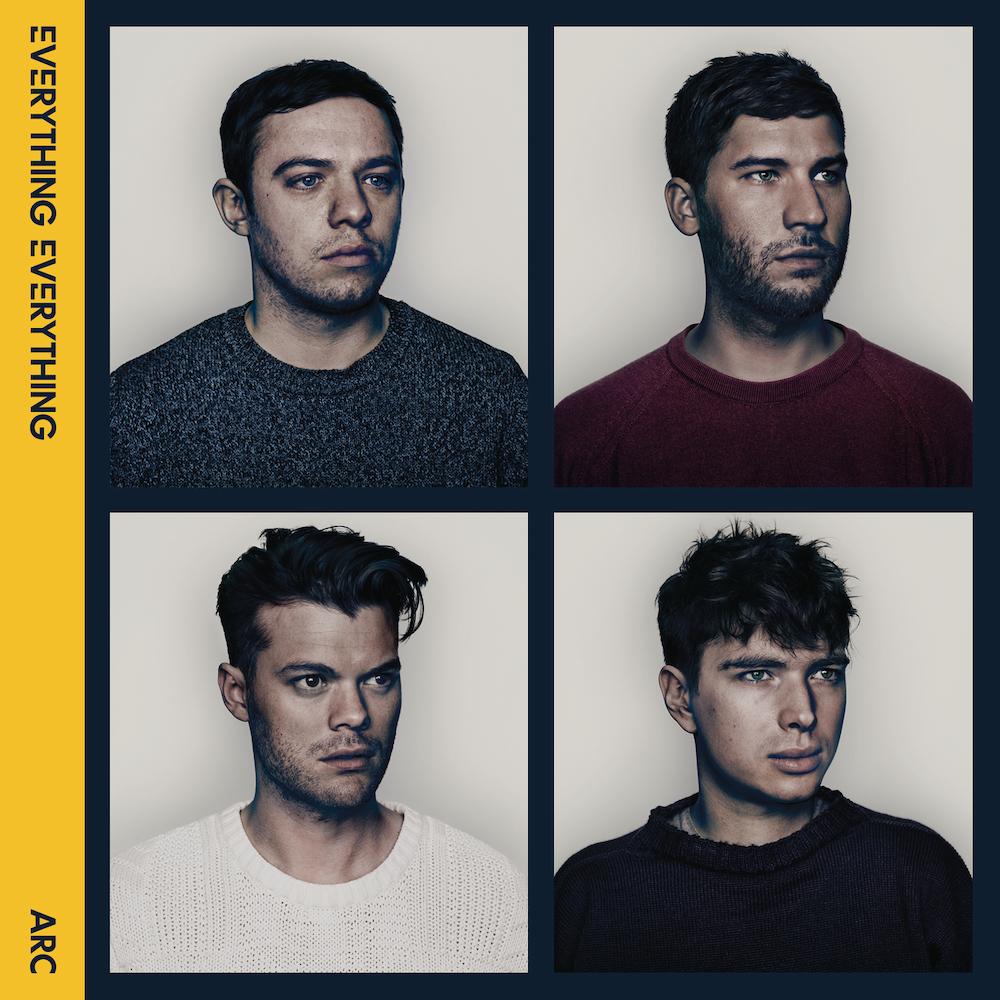
Everything Everything – Arc
[Sony]
Though their magnum opus Get to Heaven would arrive two years later, Manchester’s finest Everything Everything made tremendous strides towards greatness on their followup to Man Alive, a debut that announced a band with more talent, ambition and ideas than sense; often it was just a bit much. The actor Jeff Goldblum famously reviewed Man Alive and said that the band were so preoccupied with whether or not they could fuse poptimist RnB stylings with angular dance-punk, that they never stopped to think if they should.
Arc dials down the hyperactive, attention-hopping madness just enough for the band to strike upon a mostly impeccable balance between pop accessibility and idiosyncratic weirdness. The band’s songwriting evolved to the point where every song contains multiple ear-worms; hooks so catchy they deserve their own vaccine. Jonathan Higgs’ singular vocals and lyrics form the centerpiece of a record that despite its insistence on being fun to listen to (except during its languid, emotionally stark ballads) is actually deeply pessimistic about the state of the world. This is apocalyptic stuff that tackles the anxiety of the modern age and the ghoulish specter of male depression with a strange mixture of obtuseness and forthrightness, all culminating in “Don’t Try”: a desperate plea for compassion and an end to the toxic masculinity that puts emotional stoicism on a pedestal: “don’t try to hide it, cause it’ll have you in the end.” With Arc, Everything Everything proved they weren’t just messing around, they had something to say and had found a way to say it that wouldn’t get on your nerves. – Andy Johnston

Fuck Buttons – Slow Focus
[ATP Recordings]
As the industrial clangor arrives on album opener “Brainfreeze” and is then subsequently mutated into a vast synthetic landscape of buzzing circuits and tidal electronics, the concept of genres is pretty much laid to waste. Across Slow Focus, their third and final record, Fuck Buttons – the mantle of art school friends Andrew Hung and Benjamin Power – look inward and outward, expressing internal realignment through open-world cinematics.
They’ve always known how to evoke magisterial awe through the exploration of rhythmic tectonics, but Slow Focus feels somehow even more elemental, more attuned to the turning of earth and sky and the immensity of its own reality. There’s less interest in human forms and a deeper attention to primal machinations of time and space. But that doesn’t mean the duo have forgotten what it means to be corporeal things – just listen to “The Red Wing”, with its oddly captivating grooves and whirring cogs for proof of their ability to blend dancefloor affectations with the complexity of various metallic strata. “Stalker” grows from simple repeated synth sounds into a chaotic entity of unparalleled mass and gravitational force which threatens to absorb anything it touches. These songs subsume sensation, reshaping our experience in light of their own dense electronic perspectives. And all we can do is hold on, immerse ourselves in each radiant and darkened moment, and wait for an ending that we hope doesn’t occur. – Joshua Pickard

Grouper – The Man Who Died In His Boat
[kranky]
Grouper‘s 2008 album Dragging a Dead Deer Up a Hill and The Man Who Died in His Boat were mostly written contemporaneously, though the latter wasn’t fleshed out and released until 2013. Approached as a diptych, these albums represent Liz Harris’ shift from primarily ambient work to an approach more clearly grounded in songcraft.
Throughout Boat, Harris demonstrates the emotional range of her voice. Also, despite being shrouded in layers of reverb and remove, Harris’ melodies are well-envisioned and evocative, conjuring impressions of the afterlife, limbos, those in-between spaces that fascinate and terrify the living.
The title song is built around an elementary acoustic strum and schoolyard cadence. “The man who died in his boat / … spent a long a time / getting everything ready for his trip,” Harris sings. On one hand, these lines wouldn’t be out of place in a children’s book; on the other hand, Harris questions the amount of time we spend planning for and/or worrying about our demise. The juxtaposition of innocence and world-weariness is striking.
The instrumental “Vanishing Point” features out-of-tune piano notes draped over an analog hiss. One imagines a bardo that could turn blissful or nightmarish, a hallway bathed in soft light that stretches indefinitely toward nibbana or a ravenous black hole. “We’re all of us at this ill-fitting party,” Harris comments on closer “Living Room”, pointing out the pretensions, personas, and scripts we take on … simply to fit in. In soundtrack terms, the piece might play during the after-the-party scene, when the main character is alone in a motel room, or perhaps the next morning, when, despite notably blue sky and sunny weather, they’re plagued by regrets.
Boat and Deer redefined Harris’ direction as an artist. Blending instrumental inclinations and songwriting flair, Harris traversed the dreampop, psychedelic folk, and celestial pop domains. Going forward, she would draw from these templates, expanding on them with such projects as 2014’s Ruins and 2021’s Shade. – John Amen
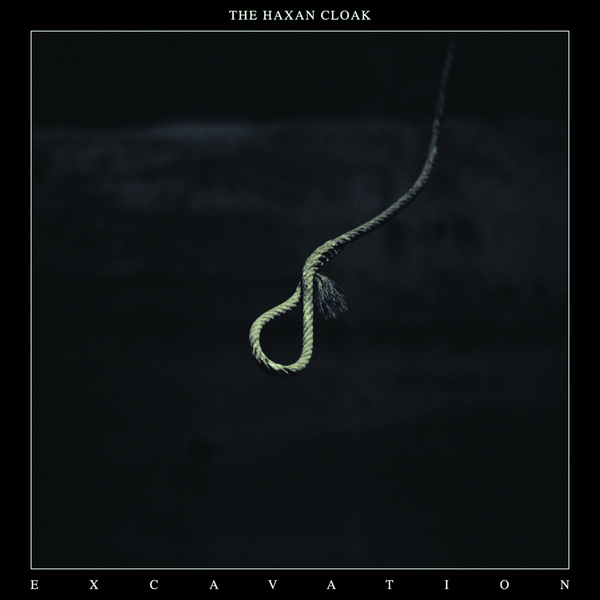
The Haxan Cloak – Excavation
The only time that I thought music might actually kill me was at a The Haxan Cloak show at Netil House in Hackney. Pharmakon was the support act and that felt like party music compared to the colossal weight of oppressive dread that Bobby Krilic was able to conjure from his arsenal of synths and laptops. The bass on his second (and to-date last) album, Excavation, is monumentally heavy enough on record, but live, when pumped through a sound system, it is lung-crushing. There were times I genuinely felt like I couldn’t breathe and I was a hair’s breadth away from a full-blown panic attack throughout. In short, it was one of the best gigs I’ve ever been to.
It would actually be fitting to pass away to the sounds of Excavation as it is purported to be a sonic exploration of the moments immediately after death. And whilst I can’t speak to its accuracy, Excavation is an undeniably powerful piece of art, that creates an atmosphere somewhere between horror and psychological breakdown. There’s industrial and dubstep and ambient and experimental noise all converging into something distinctly otherworldly, that’s both existentially terrifying and awe-inspiringly beautiful. I posit that the 13 minute closer “The Drop” is the most uniquely moving song of 2013.
It’s no wonder that this record made Bobby Krilic a hot commodity in terms of production (The Body and Björk are probably the most high profile to utilise his particular set of skills) and film and TV scoring (he worked miracles on Ari Aster’s Midsommar and helped elevate Lee Sung Jin’s BEEF into arthouse TV), but it does pain me that we haven’t had another The Haxan Cloak record. – Andy Johnston
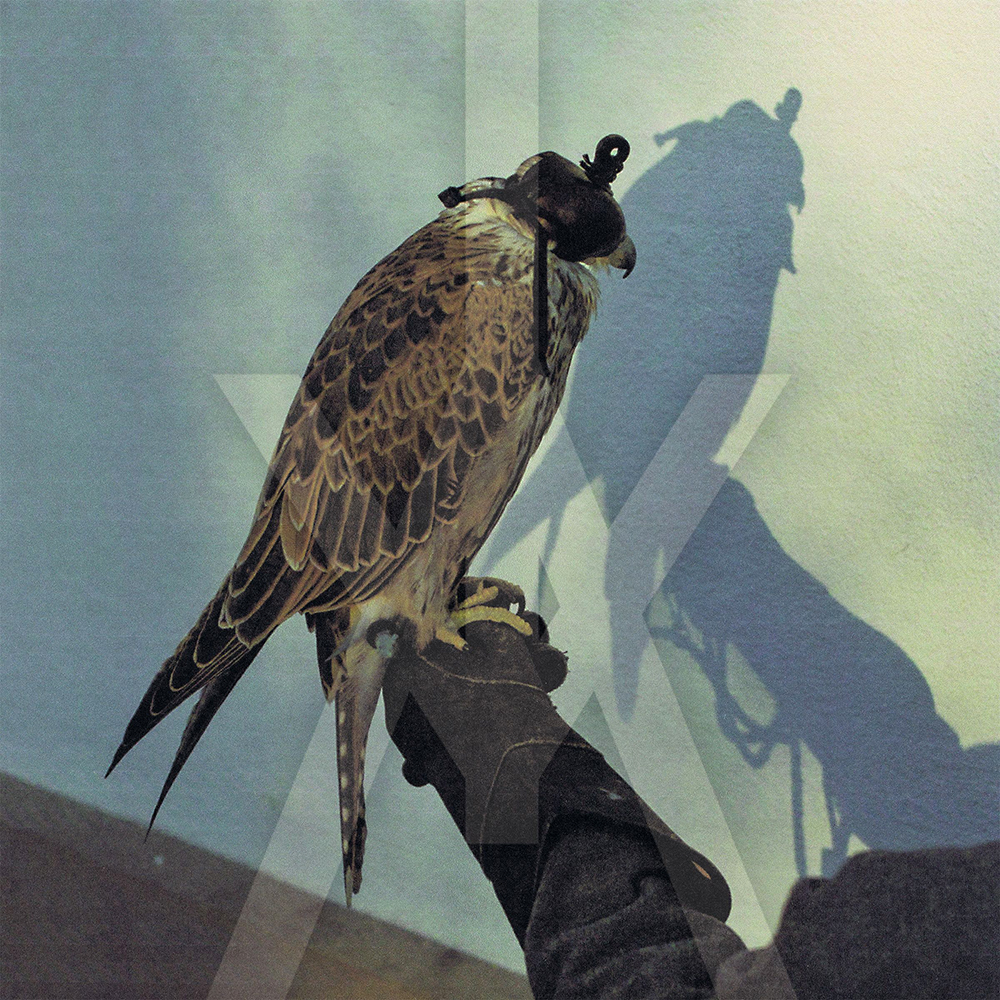
Iceage – You’re Nothing
[Matador]
Danish upstarts Iceage had burst onto the scene with all the fury of a geyser spewing lava with their short and sharp 2011 debut album New Brigade, but it was with the follow-up You’re Nothing that they would establish themselves as one of the most vital rock bands in the world – which they have reaffirmed with each subsequent release.
You’re Nothing maintains the hell-for-leather pace and sneering attitude of its predecessor, but sees Iceage embedding more textures to their approach and providing more surprising sonic shifts – the kind that send many whipping necks into a sudden frenzy of ecstatic confusion during their live shows. Elias Bender Rønnenfelt also forged his position on the pantheon of great bandleaders with his growling, spitting performances on You’re Nothing. While the band churn and charge behind him, he unloads volley after volley of unimpressed observations and self-exalting claims.
Through this rough and ready approach, You’re Nothing comes across like an insuppressible uprising of the next generation, coming out swinging at the opulence and inequality seen in the world around them. Iceage are the leaders of this global protest, commanding with their hellish pace and give-no-fucks barrage. Rønnenfelt, coasting on the top of this deluge, is the standard bearer, delivering stinging and anthemic critiques (“Where are your morals?”; “You’re nothing”), and confessions of self-collapse (“Pressure, pressure, oh god no!”), but unearthing unkempt euphoria amidst the rubble of society’s detritus, which inspires the band to march on. “Do you hear me!?” they scream on the unstoppable “Burning Hand” – for a certain sect of listeners, we not only heard, we fell in line. – Rob Hakimian

Ichiko Aoba – O
[Victor Entertainment]
Sometimes, we forget about magic. Entrapped within social media and post-capitalist melancholia, it often seems impossible to escape the shackles of civilization and out daily grind. But then we encounter singular masterpieces, art that seems like rainbows invading our rooms. Pure, unfiltered beauty and positivity – the things that make it worthwhile to be living. 0 is such a gift, sent from a distant star – the ‘Ether’ that the simps in All About Lily Chou-Chou discuss.
At its heart, Ichiko Aoba‘s masterwork is a minimalist folk album, enriched with elements of jazz, ambient and Japanese pop. But there’s unknowable elements of deep charisma and soothing serendipity here, which seem to make every smallest moment stand out with utmost importance, such as the strange “iam POD (0%)”, which opens as a calm ballad, but slowly develops into something more melancholic, finally disintegrating into a short coda of Aoba humming the notes as the guitar stops in its tracks. There is the somewhat unsettling chorus of “Mars 2027”, framed by strange field recording sounds, only to morph into a prog-rock-like interlude, and return back to its beginnings. In the album’s mid section, crickets and birds appear, droplets of water surround Aoba’s voice, as if she has miraculously transported us into a jungle or cave setting. Is this even still a record, or a transcendental journey?
0 has, by now, reached an iconic status, spreading among virtual travellers for years, until it swept Aoba onto shores of distant nations, playing sold out venues, with listeners spontaneously bursting into tears, skidding off stage to rapturous applause. Revisiting the record, it’s easy to see why: 0 is how life is supposed to be, rich in a kaleidoscopic variety of emotions and exploding with divine beauty. In hundreds of years, this music will still comfort us. It is, simply put, eternal. – John Wohlmacher
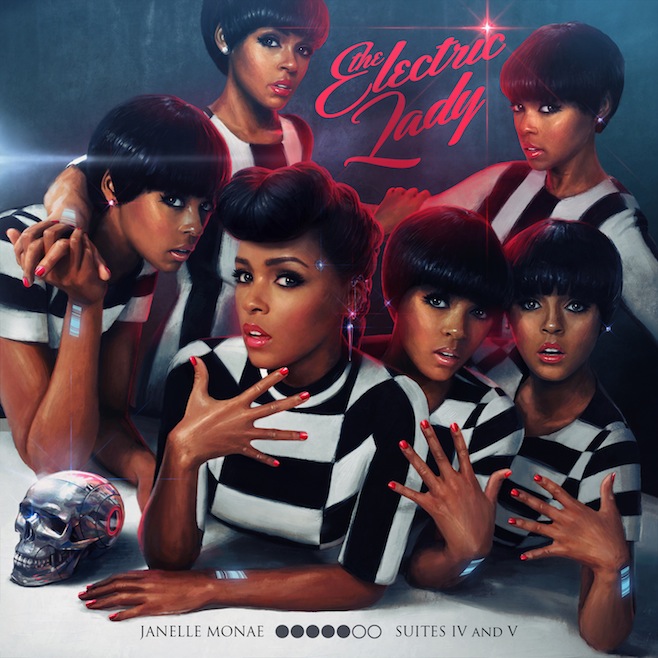
Janelle Monáe – The Electric Lady
[Bad Boy/Atlantic]
Janelle Monáe delivered a masterpiece with 2010’s The ArchAndroid. With 2013’s follow-up The Electric Lady, Monáe further solidified their status with another unbounded collection that makes up suites four and five of their Metropolis saga. We get bouncing sing-a-longs (“Dance Apocalyptic”) and sultry R&B (“Primetime” feat. Miguel) alongside her glistening dance numbers. Erykah Badu, Esperanza Spalding, Prince, and Solange also make guest appearances. Structurally, the album follow’s its predecessor: overtures announce suites four and five, which make up the album. The shimmering riffs of “We Were Rock and Roll” sounds like a callback to The ArchAndroid standout “Cold War.”
Yet a more populous context grounds The Electric Lady. The album’s interludes take the form of radio DJ conversations that provide on-the-ground context of the liberation Mayweather is fighting for. On album highlight “Ghetto Woman,” Monáe delivers another glistening empowerment anthem that anyone could relate to (“You were built to last forever”). If The ArchAndroid established Monáe as a savior of their people, The Electric Lady reaffirms their solidarity with the very people they’re saving. It’s a reassuring vision that serves as a north star where, a decade later, division and cynicism have never been so strong. – Carlo Thomas

Jenny Hval – Innocence is Kinky
[Rune Grammofon]
Although she would gain more attention with the following Apocalypse, girl, her debut release on Sacred Bones, Innocence is Kinky is arguably Jenny Hval’s breakthrough and still sounds eerily alien and cleverly clinical as it did upon release. “That night, I watched people fucking on my computer” has to rank among the great opening lines to an LP. While Hval has gradually reached a more comfortable place in her most recent two albums, there was a sense of desperation to her work here, yearning for connection and flailing about in a mixture of reflective ecstasy and panic – with her Norwegian lilt adding to the frosty atmosphere. She may have surpassed it since, but Innocence is Kinky still stands as an early testament to Jenny Hval’s vision and ambition. – Chase McMullen
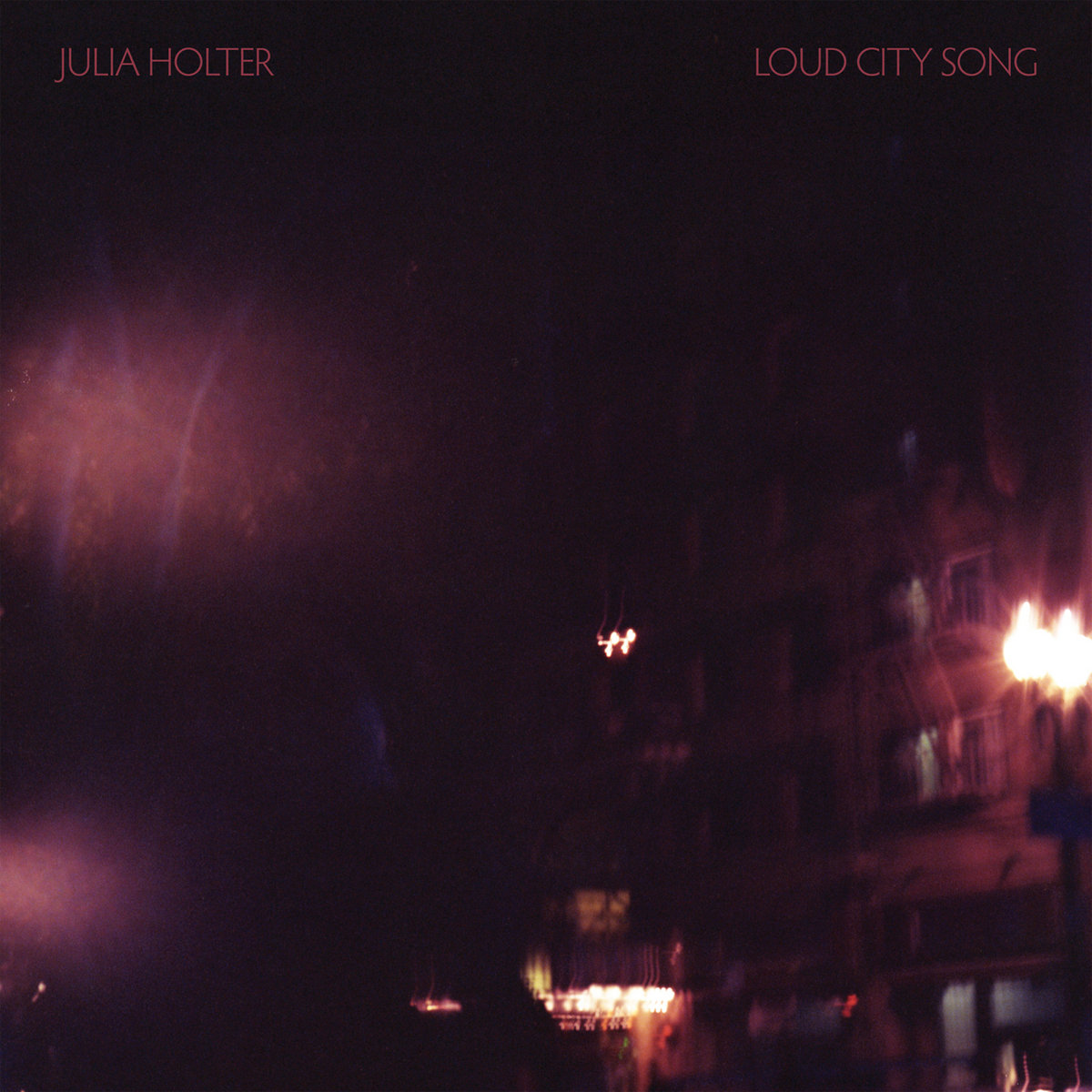
Julia Holter – Loud City Song
[Domino]
There was a certain thrill to seeing art pop and avant-garde composer Julia Holter pivot to her most accessible, pop-adjacent form on her third record, Loud City Song, especially considering she hadn’t lost any of her edge. The nine songs contained on this album are sublime, and are just as exciting and unpredictable as the more languorous and experimental material that came before it.
Largely eschewing her previous work’s longform experimentation, tinkering and lo-fi soundscapes (à la something like “Celebration” from her debut), Loud City Song is sleek and polished, with recognizable song structures, sticky choruses, and resplendent musicality. That it is also still careening to and fro with puzzling ideas and surprising turns is just a bonus. On one hand, you have songs like “Horns Surrounding Me” that are fizzy, catchy pop; on the other you have the slow motion crawls of “World” or “City Appearing”.
Then you have the twin barnburners, “Maxim’s” I & II, which take the same core song and do such wildly different things with it that it totally justifies the dual existence. Best of all might be a cover of Barabra Lewis’s lovely 1960s gem “Hello Stranger” that Holter slows and expands into a dreamy, wide-open vista. It’s practically unrecognizable to its original self, and a fully unpredictable move from Holter, but it works marvellously. What she does with a song like “Hello Stranger”, and what she does in every other dazzling corner of Loud City Song, is proof enough of what makes her and this record so special. – Jeremy J. Fisette

Julianna Barwick – Nepenthe
[Dead Oceans]
Simply the best album for people watching from a lonely apartment window on a rainy night, Julianna Barwick’s Nepenthe also happens to stand as one of the greatest albums of its kind. What kind is that, you ask? It’s hard to say. In the age of The Magic Place and Nepenthe, Barwick was beloved by music nerds; “artsier Enya” to my father. I wouldn’t classify this as purely ambient music, and it’s rather too graceful and subdued for New Age, and, indeed, it’s certainly relatable to dream pop, yet worlds away from it.
It’s easier to describe what it is rather than what it isn’t quite: Nepenthe is serene, hopeful and haunted by turns, above, above all, just damn gorgeous. Barwick is a master here at gradually manipulating a mood, coaxing deeply felt feelings from an often glacial sense of patience for the moment. She may have grown enchanted by other ideas in her two albums since, but Nepenthe shall always stand for the intense sense of wonder she was able to create, and, seemingly, feel via a fluid, cerebral ocean of sound. – Chase McMullen
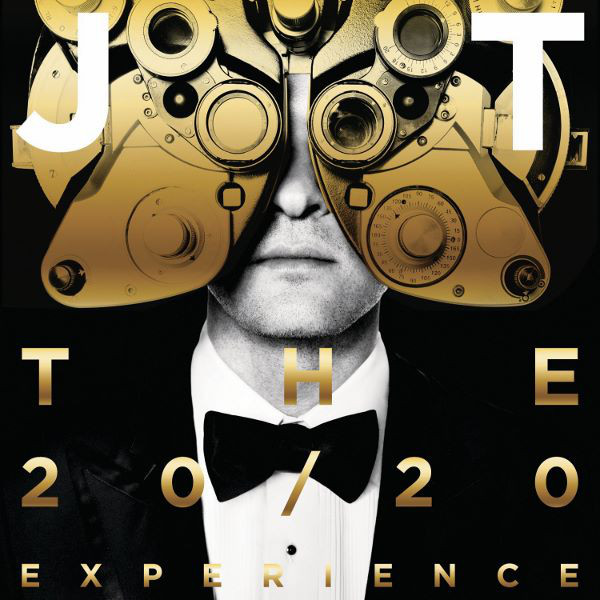
Justin Timberlake – The 20/20 Experience
[RCA]
I don’t know about you, but it still feels weird to think of Justin Timberlake as a bonafide pop star. I know, he was in one of the quintessential boy bands of the 90s. I haven’t forgotten about 2002’s Justified (and its standout “Cry Me A River”) and I certainly haven’t forgotten about the ambitious and sultry follow-up FutureSex/LoveSounds, but weirdly I don’t think of Timberlake as a popstar first. His CV says I am wrong, of course; I’ve probably just watched too many movies with him in it, and have changed his status to movie star in my head. (Or maybe I just think of him as that guy who once partially owned MySpace.)
But if I need more evidence of his musical chops then The 20/20 Experience is a dead cert example of how good he can be in front of a microphone. It’s easy to forget how strong an album this is, even considering it’s one of JT’s most successful and highly-rated full lengths. (It’s certainly the last great album he did, the less said about the Part 2 version of this record the better.) “Mirrors” rightfully still gets radio airtime to this day and could be said to be one of the best pop songs of the past decade; “Let the Groove Get In” is a bustling carnival of energy; and “Suit & Tie” still reeks of that buttoned up, heavy cologne, slick haired elegance.
Yes, the album has strong white boy energy and it’s a little dorky for its own good on the likes of “Strawberry Bubblegum” and “Spaceship Coupe”, but it’s easily forgivable. At its best it’s fun, friendly and welcoming, and the ambitiously long tracks allow the grooves to set in and the territory to be fully explored. If you’re not convinced then at least I am: Timberlake is a pop star through and through. – Ray Finlayson
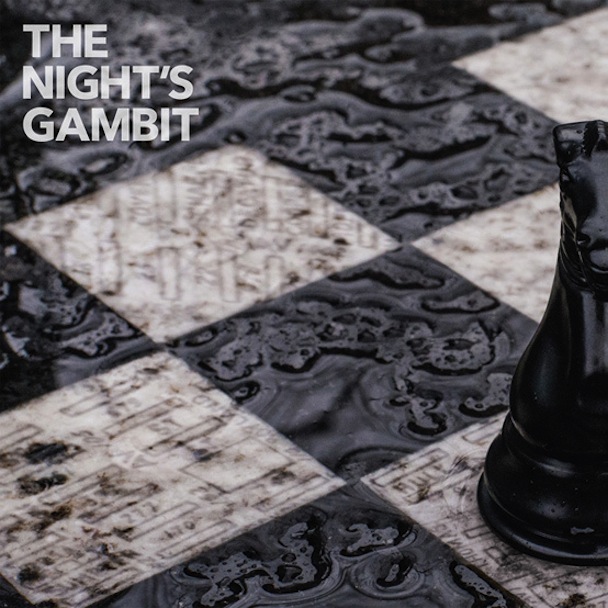
Ka – The Night’s Gambit
[Iron Works]
Not that he’s sought it before or since, but The Night’s Gambit is when Brooklyn rapper Ka started to get a shred of spotlight. This isn’t because he compromised his style, more just the fact that word of mouth about this unique storyteller had spread like the very fires he fought in his day-to-day job. And those who came to Ka’s music were not given a hearty welcome; The Night’s Gambit does not possess party-ready beats and catchy flows. In Ka’s domain, the story comes first, his style conversational, loquacious and riddled with references that are ripped straight from the streets around him.
In recent years Ka has gone on to speak as something of an elder statesman in his community, but back in 2013 he was still figuring out his way through it, acknowledging the hustle and danger of daily existence in the streets of Brownsville. Never one to be left behind, you can hear the gears of his brain whirring as he lays down the truth of the situation. The album’s title, cover and interstitial samples all relate to chess and strategy; being one step ahead of the opponent is essential for a mind as sharp as Ka’s. – Rob Hakimian
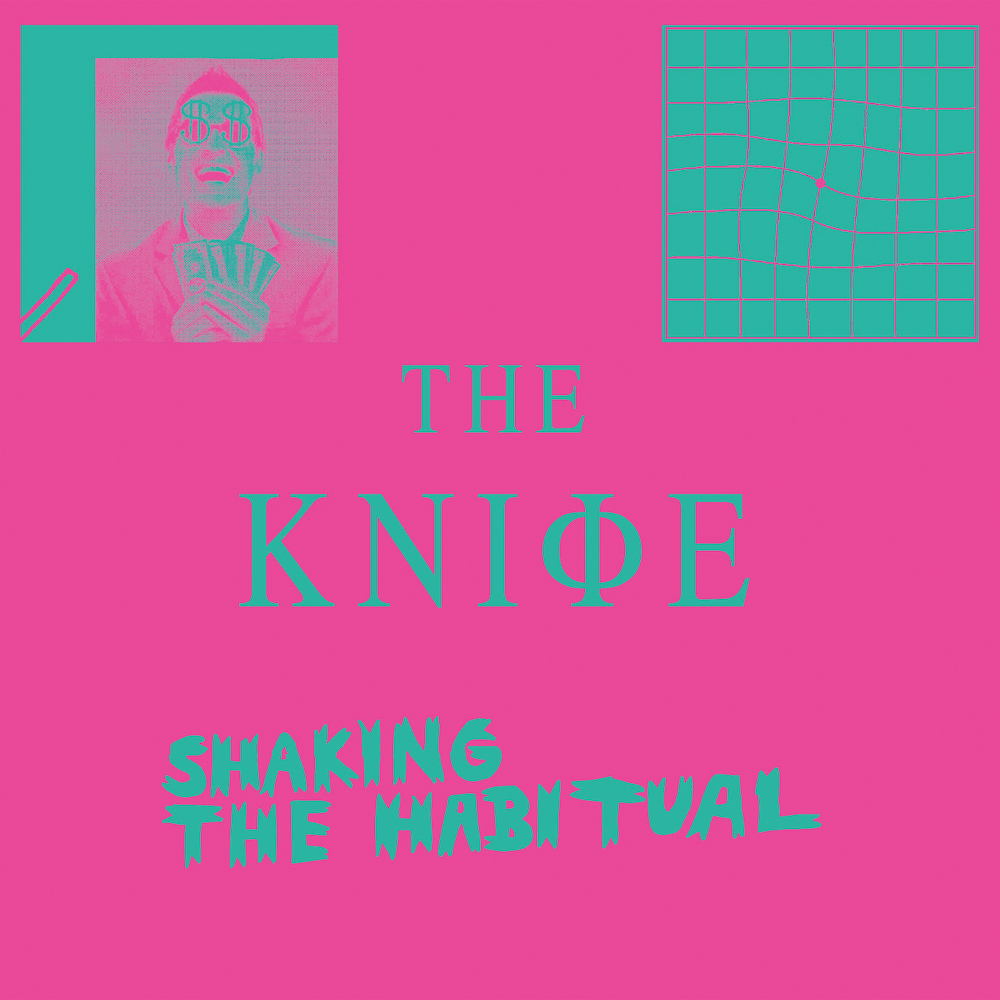
The Knife – Shaking The Habitual
[Rabid]
You released one of the finest albums, not just of 2006, but arguably of the decade too. Fans have been waiting on tenterhooks for years for the follow-up, only sated ever so slightly by a peculiar and beguiling opera soundtrack in 2010. You have the attention of an audience who will drop everything at a moment’s notice, so what do you do?
The answer, of course, is to take up as much of your listener’s time as possible. “It’s nice to play with people’s time these days,” Karin Dreijer said back in 2013 when talking about the long-awaited follow-up. They were mostly referring to the 19 minute instrumental “Old Dreams Waiting to Be Realized” sitting at the centre of the album, but it could just as easily be applied to anything else on Shaking the Habitual. Multiple tracks from the Swedish duo’s final album stretch toward the 10 minute mark, requiring you to fixate your attention for extended periods. It’s not a hard ask though, since all the mutations of pop and electronic music make for fascinating landscapes to explore.
Dissertations aplenty could be written on unpacking the references here (Jeanette Winterson, Michel Foucault., Margaret Atwood, to name but a few); there’s no mistaking that as heady and demanding as Shaking the Habitual can be at times, it’s above all else a striking artistic statement that condemns the inequalities of the world. “What we do is political. That should be impossible to misunderstand,” Karin and Olof say of the album. It takes time to fully unpack and appreciate the record (even a decade on), but it’s undeniably time very well spent with every play. – Ray Finlayson
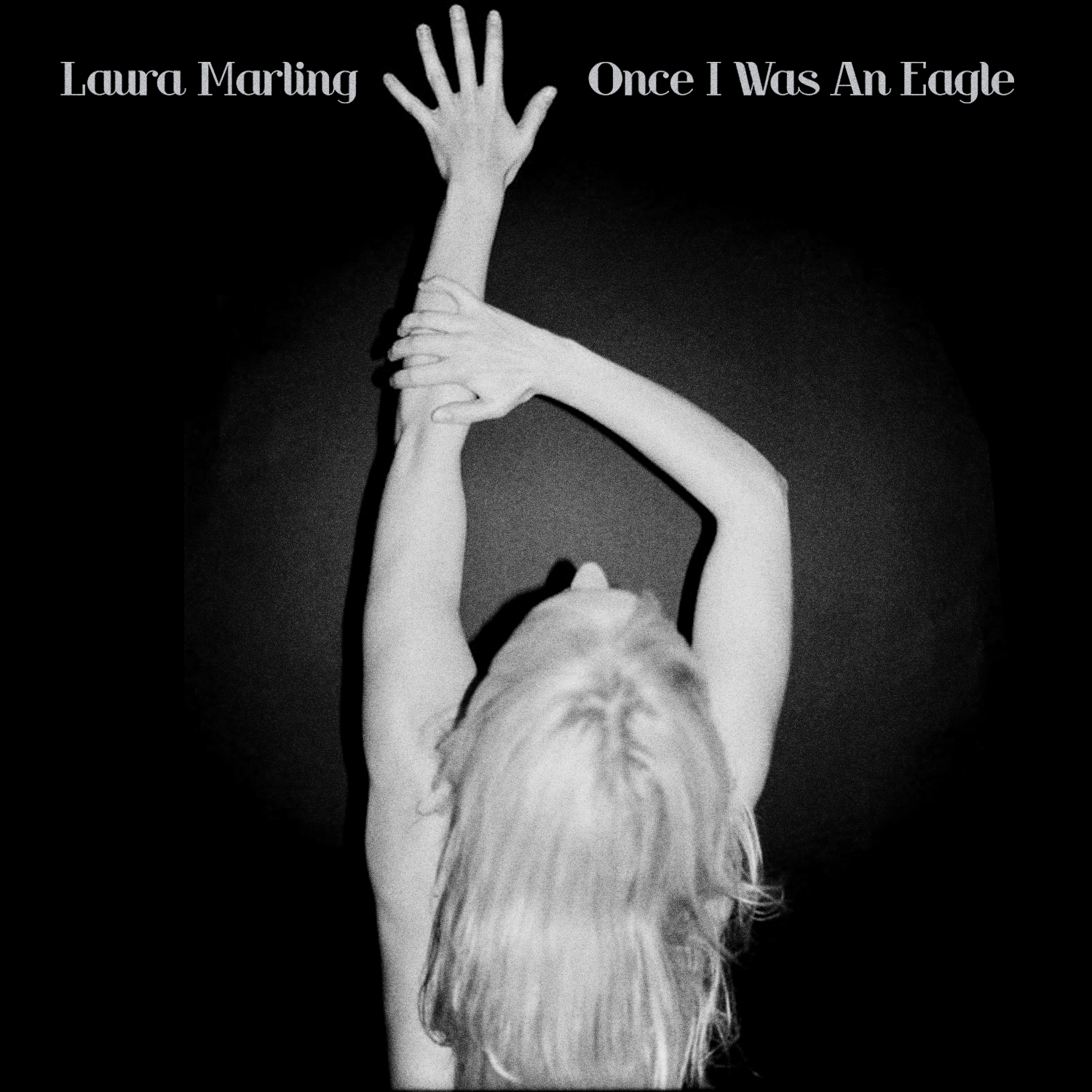
Laura Marling – Once I Was An Eagle
[Virgin]
Singer-songwriter Laura Marling was a bit of a wunderkind, entering the scene with a strong debut and sophomore record when she was still a teenager. But the release of her fourth record, Once I Was An Eagle, was when it felt like she had truly arrived.
Opening with a four-song interconnected suite, the album is by most metrics her most ambitious and sprawling effort to date. The songs — often played in ringing, harmonic open tunings — are fiercely catchy, rustic without sounding rickety, and her voice had never sounded better. Across its 16 tracks and more than 60 minutes of runtime, Once I Was An Eagle appears to loosely chart the ups and downs of a relationship. But the overall thematic cohesion isn’t really necessary to understand and appreciate the sheer magnitude of these songs.
Stripped of everything they don’t need, Eagle has several songs that rank among Marling’s best. You have the fiery first single “Master Hunter”; the lilting “Once; the spacious and looming “Little Bird”; hell, the opening suite has been a staple of her live shows ever since, because of its power as a 16-minute piece, starting with the subtly blooming “Take the Night Off” and ending with the urgent “Breathe”.
While some may argue that Marling found greater strength in economy on later releases (especially her most recent, Song for Our Daughter) it’s hard to deny the grandiosity of Once I Was An Eagle. It’s her most immense statement, full of enough lyrical, sonic, and melodic details to keep it alive all these years later. – Jeremy J. Fisette

Lorde – Pure Heroine
[Universal]
Lorde’s debut Pure Heroine, released when the singer/songwriter was only 16, unfurls as a coming-of-age manifesto, brimming with cynicism and youthful élan. Produced by Joel Little, who co-wrote many of the songs, the album features fete-friendly melodies, varied soundscapes, and Lorde’s distinctly mercurial vocals.
“Tennis Court” includes spacious verses and choruses replete with serrated synths and languid drum parts, Lorde and Little exploring dreampop and darkwave textures. Lorde introduces us to a milieu of thrills and ennui, expressing joy in the material life while never overly identifying with it. On the anthemic “Royals”, Lorde points out the vapid veneer of celebrity life and social-media braggadocio (“gold teeth Grey Goose ball gowns”) while asserting that she and her friends “crave a different kind of buzz”, which has more to do with being fully alive and authentic in the moment. The song is mostly carried by Lorde’s vocals, though percussive elements and understated phase/warp effects combine to forge an intriguing atmosphere.
On “Buzzcoat Season”, Lorde deals with bad news while on vacation, trying to distract herself with “pools”, “blue”, and a romantic “hologram”. She can’t, however, willfully insulate herself or tune out what’s happening in the world. On “Glory and Gore”, she more intentionally laments the violence that pervades the globe, her vocals stacked, interwoven, and staggered, the catchy chorus blending exhilaration and fatigue.
On closer “A World Alone”, Lorde references “all of my fake friends” while acknowledging that she and her bestie are “dancing in a world alone”. In this way, despite its blingy allure, Pure Heroine lands as an anti-capitalistic manifesto, Lorde emphasizing that self-acceptance, non-transactional relationships, and intimacy are what ultimately matter. – John Amen

Majical Cloudz – Impersonator
[Matador]
Each line on Majical Cloudz‘ album Impersonator feels like it’s accompanied by a rhythmic blow to the chest, an empathic expression of emotion without form or implication – it just exists and wishes to be heard. Driven by the intertwined musical affections of Devon Walsh and Matthew Otto (with Matthew E. Duffy having left the band following the release of 2011’s II), the album was a startling expression of devastating emotional sincerity and meticulously executed simplicity.
Welsh wasn’t just writing songs; he was offering stories and revelations, a fiction of the world and the beautiful and painful moments we share. This was desperate pop music – broken and weary in its temperament – acidic and forlorn but also ready for love when it might be least expected. Musicians like Stephin Merritt and Joe Pernice have long found purpose in exploring these whispers of macabre euphoria, and Welsh and Otto join them in perfecting this morose musical shorthand. Welsh’s voice alternates between a solemn spoken word cadence and a lovely melodic saunter, nothing overtly understated nor egregiously bombastic but traveling along a line of emphatic emotional reverence that is difficult to ignore. The name Impersonator would suggest falsity of some sort, but the album clings to a strident authenticity, using genuine pathos as a way of addressing personal tragedy through crystalline pop adornments. – Joshua Pickard
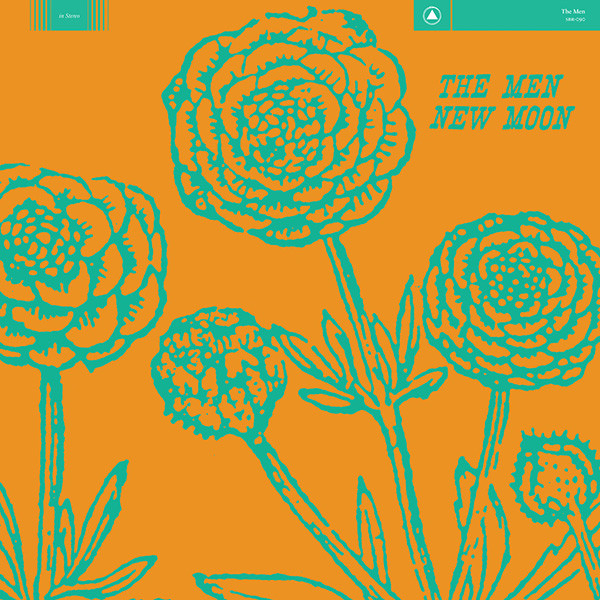
The Men – New Moon
[Sacred Bones]
With the one-two punch of 2011’s Leave Home and 2012’s Open Your Heart, Brooklyn-based The Men established themselves as one of the most brutal, blistering rock bands around. Then came their 2013 release New Moon. Opener “Open the Door” greets listeners with jangling piano keys and playful strums; the alt-country “Bird Song” sways along with a harmonica and pedal steel. These ideas didn’t come out of nowhere: Open Your Heart had its tamer, more melody-focused moments. The replacement of bassist Chris Hansell with Ben Greenberg also left the band lacking the creator of the band’s more biting tracks.
Yet while New Moon is indebted to classic-rock tropes, the band still delivers moments of unfettered energy. “I Saw Her Face” jams along hard, somber melodies before descending into a garage rock frenzy in the song’s final quarter. The squalling riffs on “The Brass” would’ve made the tune a home on any of the band’s previous releases. The rowdy “Freaky” feels both raw and effortless. New Moon may have felt like a taming down in 2013. But today, it’s more a showcase of The Men as masters of both noise and melody. – Carlo Thomas
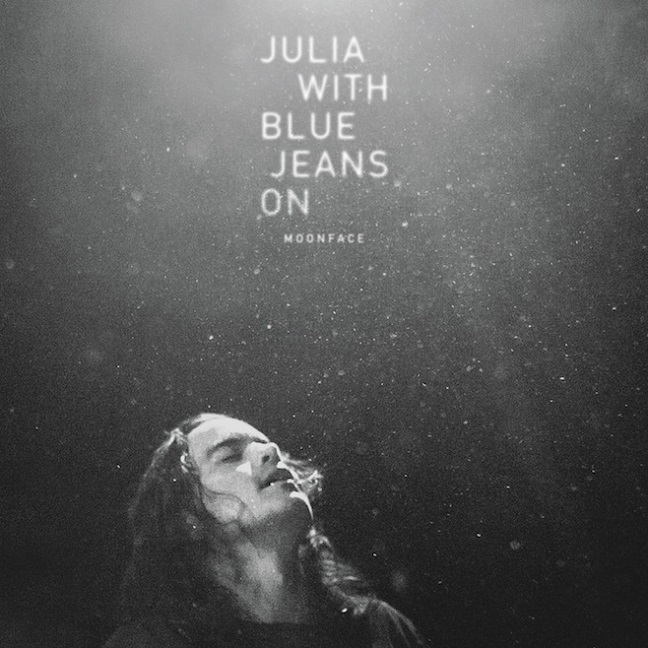
Moonface – Julia With Blue Jeans On
[Jagjaguwar]
Having climbed genuine peaks with the likes of Apologies to the Queen Mary and Dragonslayer as part of Wolf Parade, Spencer Krug had no more to prove – Moonface became his new moniker and place to let his fancies wander where they may. This perhaps resulted in his most overtly straightforward release to date; a record full of piano ballads, the often beautiful Julia with Blue Jeans On. While he’d return to stranger canals with the ultra-ambitious This One’s for the Dancer & This One’s for the Dancer’s Bouquet, his 2012 Moonface effort still stands out alongside it. Largely disconnected from his more playful sensibilities, the album has a gloom cast over it, with Krug mining fertile emotional territory through metaphor and mourning. “Black is Back in Style” is one for the ages. – Chase McMullen

My Bloody Valentine – m b v
[mbv/Domino]
Released 22 years after the lauded Loveless, and 25 years after My Bloody Valentine’s revered debut Isn’t Anything, m b v dropped amidst much excitement and some anxiety. Turns out, the excitement was warranted, though the anxiety was unnecessary, as the set mostly adheres to the aesthetics of its predecessors, with Kevin Shields perhaps being more melodically attentive and a bit more curious/thorough in his role as producer.
“She Found Now” serves as a stylistic refresher: the recognizable swirl of fuzzy guitars, Shields’ plaintive vocal fluttering in the roil. On “Only Tomorrow”, heavily distorted guitars are aggressively strummed as Shields’ voice again wafts across the field. There’s a jittery yet airier atmosphere than on the previous albums, Shields crossing lo-fi sounds with higher-fi experiments re placement, panning, and use of effects.
The second third of the album moves away from guitar-centricity. “Is This and Yes” is built around a synth-y sprawl, crystalline notes sustained. With “If I Am”, too, synth sounds are given prominence in the mix. “In Another Way” shows the band returning to their signature sound. Bilinda Butcher’s vocal, similar to Shields’ in terms of timbre, is battered by sputtery guitars and offhand blasts of off-key intonations. The weightiness of the guitars is contrasted with Colm Cíosóig’s nimbleness on the drums. While this kind of paradoxical gestalt occurred organically on the earlier albums, with m b v it seems more tweaked, fleshed out. Then again, there’s a self-consciousness here, signs of concerted effort, whereas with Isn’t Anything and Loveless, the band’s process felt more organic, less mapped.
While m b v is probably fated to third place in terms of MBV’s LP output, it successfully spotlights a seminal band as they reconnect with their unique strengths, rendering a sequence that’s engaging for its familiarity and fascinating for its subtle recasts of the shoegaze playbook. And who better to reinterpret a subgenre than the people who helped create it in the first place. – John Amen
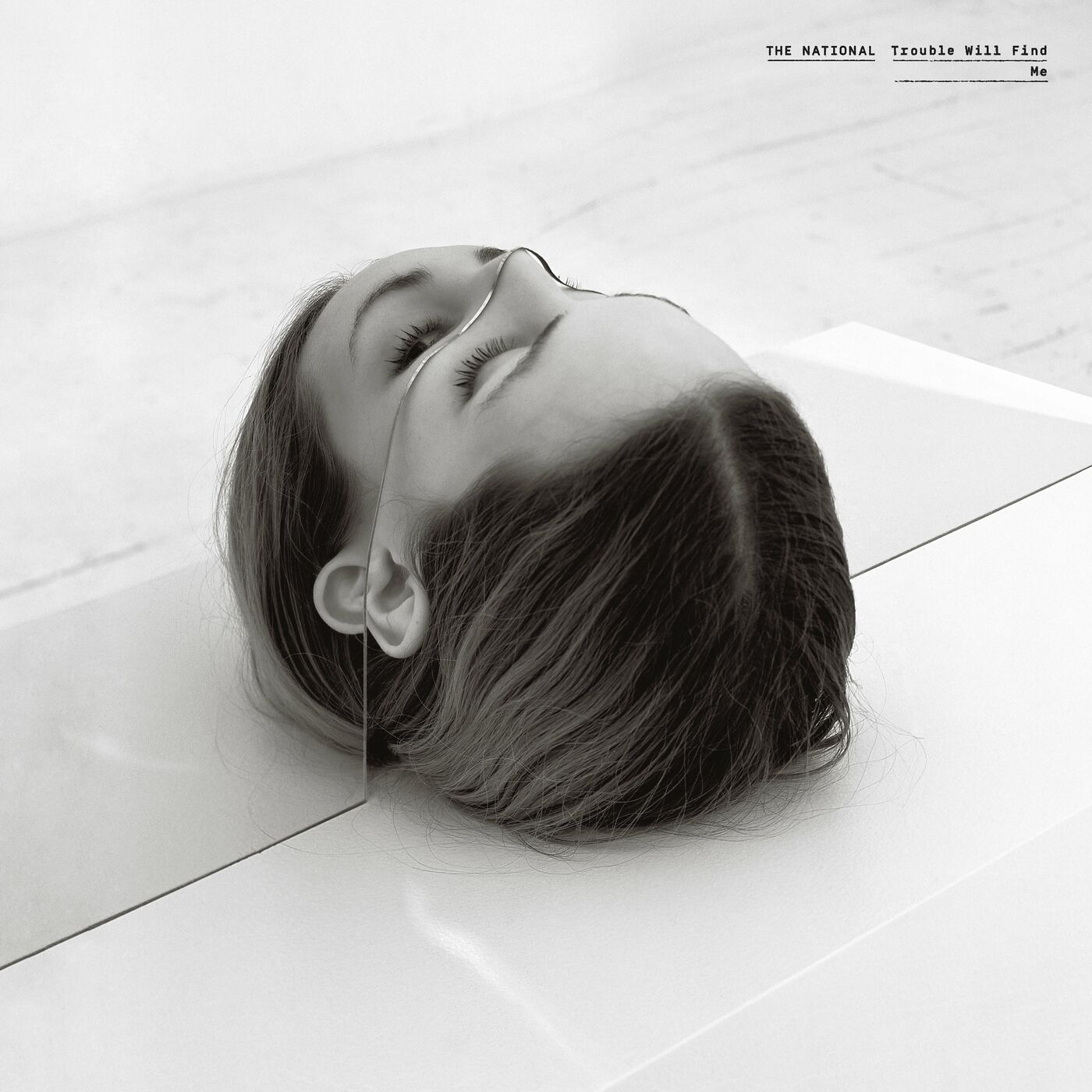
The National – Trouble Will Find Me
[4AD]
If 2010’s High Violet was The National overworking and overproducing their music (still to great result, I might add), its follow-up Trouble Will Find Me was an exhale in comparison. The 2013 album was the band honing in on what they do best; if High Violet was a fussed over painting with layers and layers of paint, then Trouble is a marble sculpture chiselled out carefully from the original stone.
Most of the tracks hit perfectly because they double down on what the band do so well: arrangements that flourish quietly; lyrics that devastate and bemuse in equal measure; and production that allows the music to unfurl a new layer with each listen. At the centre is Matt Berninger on top form with lines that sit in your head for days (“I have only two emotions / Careful fear and dead devotion”; “It’s the side effects that save us”) as well as referencing previous iterations of himself (“Humiliation” and “Pink Rabbits” seem to drop hints at the character portrayed on Alligator‘s “All The Wine”). Everyone has their favourite National album and could likely make a case for any one of the band’s records being their best. With Trouble Will Find Me, it’s an easy argument to make. – Ray Finlayson
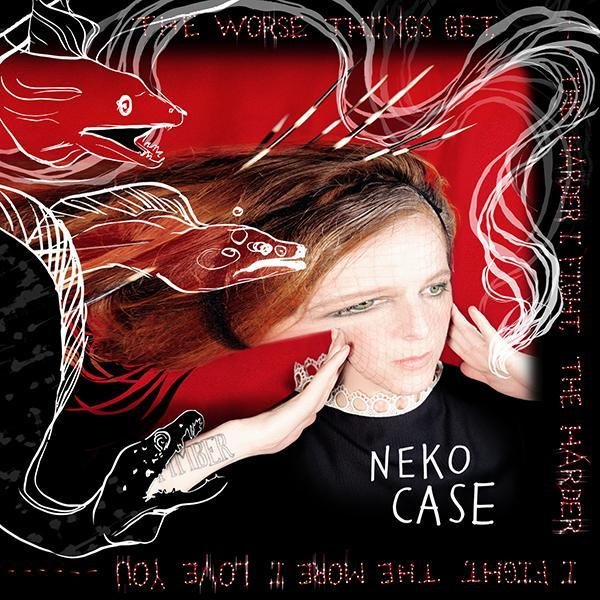
Neko Case – The Worse Things Get, The Harder I Fight, The Harder I Fight, The More I Love You
[ANTI-]
One of my favorite funny things that music journalists attempted to do when singer-songwriter Neko Case was breaking out in the mid-2000s was to argue, vehemently and endlessly, that she wasn’t actually making country music, that it was something else, or at least something alt. Looking back now, it feels ridiculous, like an attempt to defend one’s interest in Case’s work without needing to admit you like something that might be country. Now, it’s not like Case has ever made a song that sounds like a lot of mainstream country music, but to act as if she’s never made country music (or at least gone right up to it) feels disingenuous.
That all being said, Neko Case’s 2013 record The Worse Things Get, the Harder I Fight, the Harder I Fight, the More I Love You, is likely her least country-ish to-date. Across 38 minutes that fly by in a rusty whirl, Case and her trusty band churn out hit after hit. Her strength has always come from a few places — her incredibly astute lyrical game, her odd melodic choices, her dragon fire voice — and on The Worse Things Get they all cohere beautifully.
This album is sort of like a primer on Neko Case. There isn’t a hair out of place, and it sounds natural and effortless, even as she’s unleashing brittle jams like “Man” with its soft social commentary, or letting out murderous desire on “Bracing for Sunday”. Sometimes, she’s longing hopelessly for a long distance lover (“Calling Card”) and other times she’s wondering how to regain her sense of self (“Where Did I Leave that Fire”) or recalling a little boy getting bullied by his mother (the stirring a’capella “Nearly Midnight, Honolulu”).
But no matter what she’s tackling, she attacks it with vigor, a streak of drama, excellent lyricism, and a clarion call for the underdog. It may not be as wonderfully weird or twangy or narratively intricate as some of her past and future work, but as it stands, The Worse Things Get forms a perfect nexus in Neko Case’s impressive body of work. – Jeremy J. Fisette
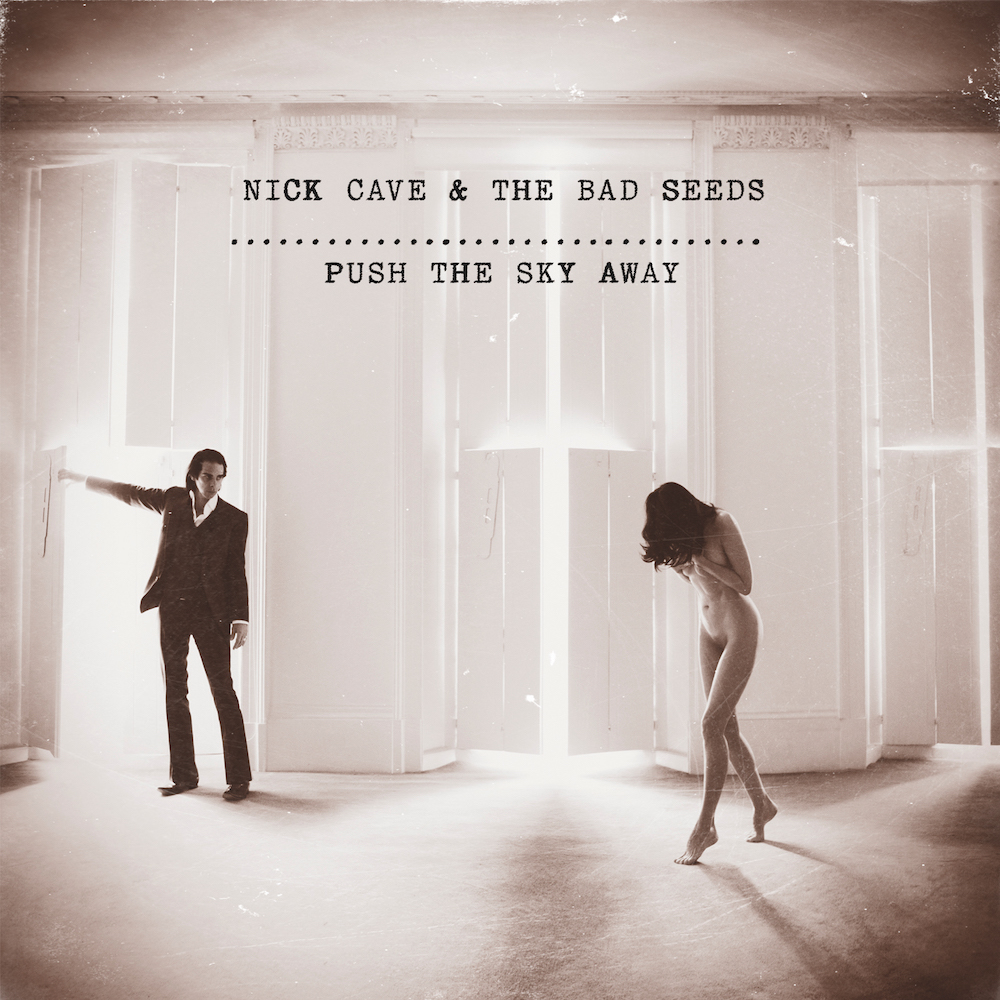
Nick Cave & The Bad Seeds – Push The Sky Away
[Bad Seeds Ltd]
As the first Bad Seeds album featuring founding member Barry Adamson since 1986’s Your Funeral… My Trial, and following the departure of Mick Harvey, Push The Sky Away felt more like a reboot than a direct sequel to 2008’s Dig, Lazarus, Dig!!!. Dialing back the percussive thump and unstable emotionality the band had been working through over the previous decade, this record was more subdued and less focused on overt catastrophe, though it was just as complicated and knotty as anything they’d released to that point.
Its narratives were stranger in interpretation and often leaned into aspects of fictional pop culture and an adoration of minute aural moments, small sounds given room to balloon into moody and occasionally menacing sonic canvases. The bluster may have been toned down, but Cave’s affinity and talent for emotional wreckage was still in fine form. Tender but also brutal in their evaluation of personal attachments and the devastation those can create, these songs reveal themselves through both sprawling vistas and intimate conversations, developing an equilibrium between universal sentiment and emotional specificity.
Push the Sky Away may seem somewhat tame in the wake of the band’s more recent experiments, but the depth of its nuanced passions and the contours of its shimmering reveries marks it as another masterpiece from a band infatuated with the loveliness of our darker impulses. – Joshua Pickard

Oneohtrix Point Never – R Plus Seven
[Warp]
Daniel Lopatin has always been infatuated with the contrast of synthetic and organic creation, of the early morning blurriness that separates reality from fantasy. However, his work as Oneohtrix Point Never has never been about exploring broader aspects of these concepts – his songs tackle the minutiae, the burned-in details that take longer to unearth and understand.
R Plus Seven makes the case that these encapsulated wonders of rhythmic morphology are often far more universal than they might seem at first blush. Forgoing the sample-heavy strategies of his 2011 album Replica, this album found him threading his electronic impulses through a variety of MIDI instruments, VSTs, and various synth conflagrations. He creates an odd juxtaposition between drawing back the curtain of his own creativity and delivering us wholesale into fully formed worlds without any explanation. In its use of repetition and quixotic electrical detours, the record functions as a series of parallel realities, each one more unusual and knottier than the next.
And it’s here when our choice to proceed seems unclear and possibly out of our control that he directs us, almost subconsciously, through these vivid and unearthly soundscapes. It’s a phantasmagoria, a series of snapshots, of moments when the world slows, and we process it through our own personal wavelengths. R Plus Seven isn’t interested in affirmation; it would rather have us question our assumptions, reveal something tangentially related, and then subsequently circle back around to have us consider an opposing viewpoint, upending our expectations of what electronic music might aspire to be in the process. – Joshua Pickard

Pharmakon – Abandon
[Sacred Bones]
A scream out of nowhere announces Margaret Chardinet’s sudden appearance, like a razor slashing a throat in some macabre, neon-lit 1970s Giallo! The 22 year old New Yorker’s voice was the first in what soon would be an onslaught of female noise and industrial musicians who brazenly crushed open a scene known of its often chauvinist leanings, resetting the perspectives that spoke of violent abuse and body exploitation to the gaze of those below, now ending up on top! And really, Abandon, her debut album as Pharmakon, is merciless death industrial at its purest and most disgusting. With just four songs, its 27 minutes of drilling and grinding cavernous intensity manifest a dark underground crypt that span a surprising variety of tones and influences, from the power electronics of “Crawling on Bruised Knees” to the ritual industrial of “Pitted”, there’s a genuinely listenable quality to the record, without ever losing any of its fierce fire.
At the time an outlier on the distinct roster of Sacred Bones, it nonetheless fit the label’s somewhat esoteric image, and with a special edition that came packaged with a dead maggot, it encapsulated the edge of the DIY nature of industrial. This allowed Abandon a strong presence even within mainstream circles, leading to a resurgence of interest in the genre, which somewhat masked just how enjoyable the record really is: “Milkweed / It Hangs Heavy” cleverly alternates between whispers and blackened screams, while the Neubauten influence of the meditative “Pitted” makes it ideal to annoy neighbours. And then there’s “Sour Sap”, a ‘Bonus Track’ the length of the preceding album, which comes across with the embattled evolution of a found footage horror film that ends in sheer terror. Pharmakon would grow with subsequent releases, opening up to more melodic and conceptual work, but her first cut is the deepest. – John Wohlmacher
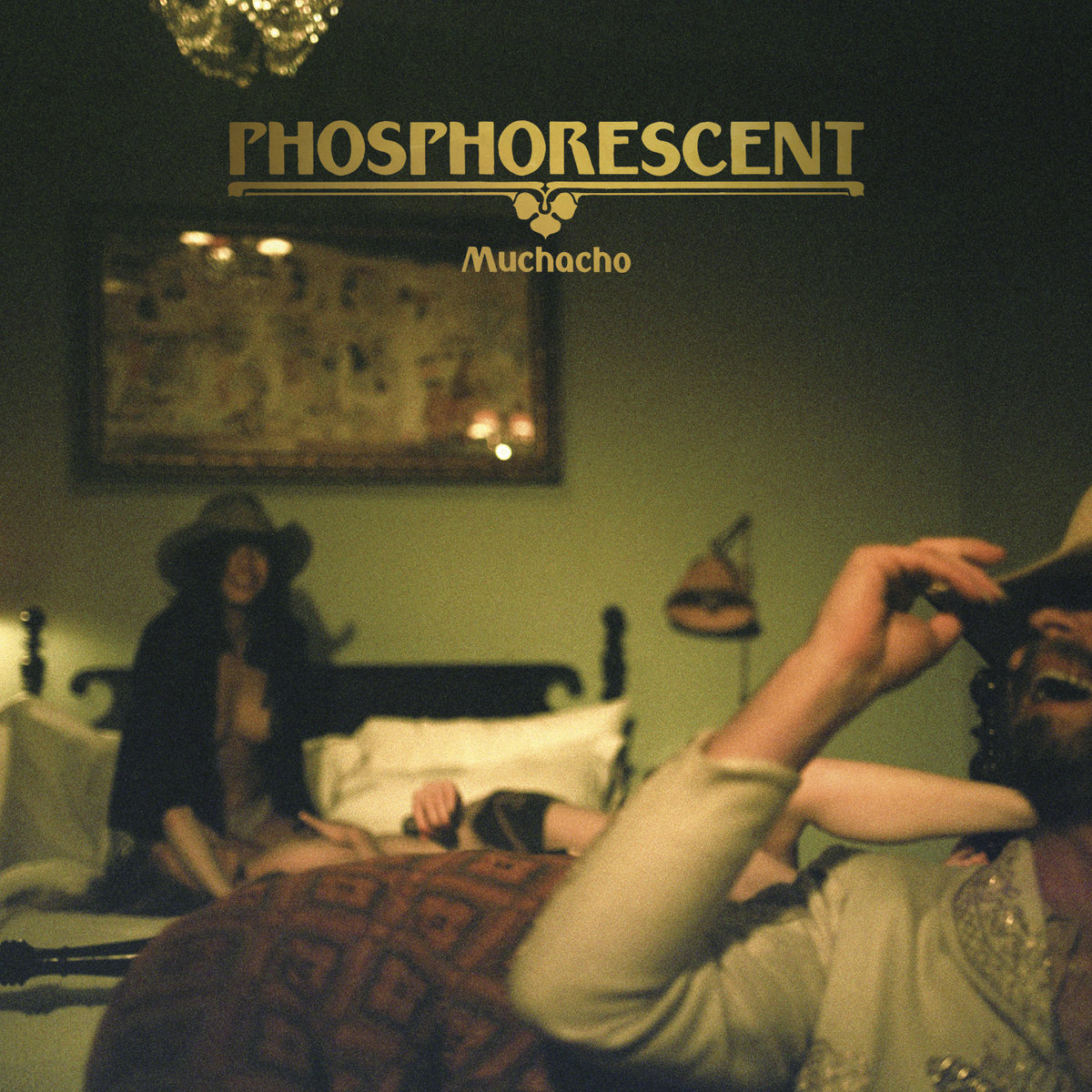
Phosphorescent – Muchacho
[Dead Oceans]
Few artists can articulate the devastation and joy of love quite like Matthew Houck. As Phosphorescent, he uses country, folk, and heartland rock to spin stories of regret, loss, and the occasional bit of light that occurs when people make room for one another. His sixth album, Muchacho, is an achingly gorgeous rumination on the complexities and emotional geographies inherent to personal relationships.
Houck has explained that these songs were drawn from the disrepair in which he found himself coming off the tour for 2010’s Here to Taking It Easy, as he lost his girlfriend, the place where he was living, and a fair amount of his mental wellness: events which are often the result of distant connections and the realities of extended cycles of live performance. But out of this devastation rises a new beauty, a deeper awareness of self.
Bits of stray electronics blur into the backwoods majesty of these rural hymns, casting longer and more oddly contoured shadows than which we might be accustomed. But there is an undeniable charm, a persuasion, a desire for understanding here than has ever been explored on any previous Phosphorescent album. Comfort is offered through stringed melodies and voices tied end to end – harmonies rising and receding, and Houck‘s shivering heart open to all and everything. – Joshua Pickard

Pusha T – My Name Is My Name
[Def Jam]
A monolith to hip hop in 2013, partly helmed by a Kanye West still riding high from Yeezus, My Name Is My Name found a Pusha T without a Clipse, rebirthed in the explosion that was My Beautiful Dark Twisted Fantasy. Fans had to wait some years following that album for My Name is My Name (not that he’d wasted his time between them, see the essential “Alone in Vegas” on Fear of God), but Push finally delivered. Featuring everyone from 2 Chainz to 50 Cent, Jeezy to Kendrick Lamar, it’s just about as rooted in its moment as it could possibly be. He came out swinging, and, needless to say, hasn’t kept swinging since. – Chase McMullen
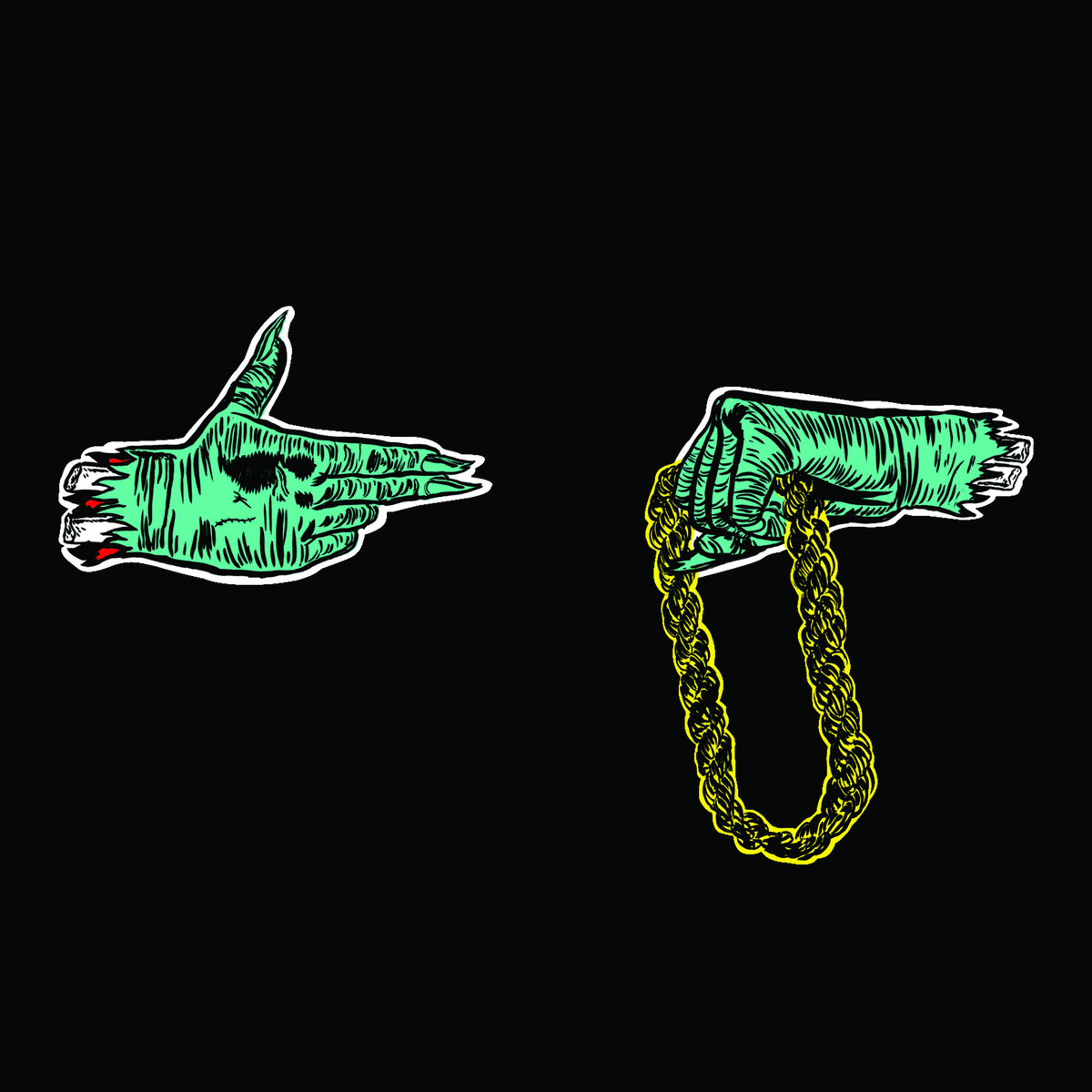
Run The Jewels – Run The Jewels
[Fool’s Gold/Big Dada]
In 2013, we learned the legend of two indie MCs – who could barely rub two Spotify streams together – singlehandedly imposing boom-bap on the era of mumble trap. While the likes of Brother Ali, Atmosphere, and Dälek probably looked on with equal amounts admiration and jealousy, Killer Mike and El-P ran electronic currents over a wet floor while wearing their Adidas, locking into a nostalgia for Run-D.M.C. and Rakim before they fade.
The A/B simplicity of Run The Jewels‘ debut album wasn’t apparent on the opening title track, where the beat’s speed required Twista-like flow over a farting bassline and an ungainly mix of horrorcore and dub. From “Banana Clipper” on, though, it’s like Big K.R.I.T. has been kidnapped and locked into a Breakin’ dystopia, Outkast’s funk futurism visiting an alternate 1985 where Atlanta is the center of the hip-hop world. Drill and trap barely blinked, but neither did El-P or Killer Mike. They grew sea legs. – Steve Forstneger
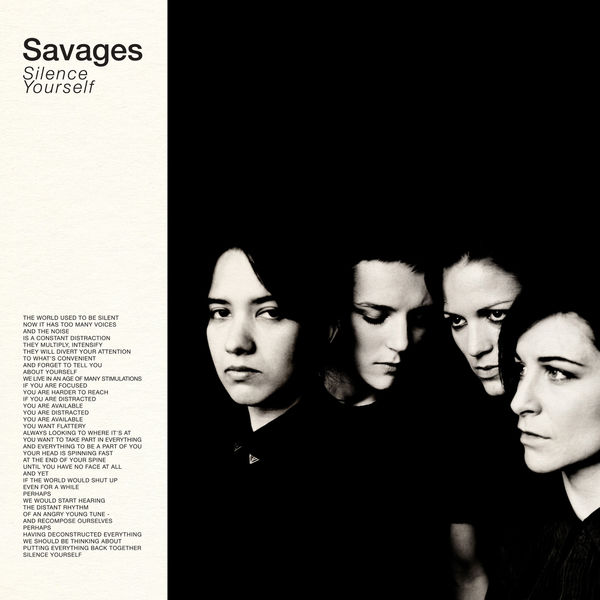
Savages – Silence Yourself
[Matador]
On their debut album Silence Yourself, Savages captured post-punk at its most fervent and confident. So it’s interesting that “Shut Up”, the opening track, wallows in self-doubt. Singer Jehnny Beth asserts herself, only to retreat seconds later (“Oh if you tell me to shut it / I’ll shut it now”).
Everything about Silence Yourself wrestles with opposing dynamics; having your phone on or not, listening to others’ viewpoints or not, trusting yourself or not. On “I Am Here”, Beth sings the title words until she’s worked herself into a frenzy, screaming before falling into silence. For some, this is the only way to break out from the silence.
Equally vital is the album’s sharp production; songs like “Waiting For A Sign,” are immersed in an open atmosphere that nevertheless feels as crisp as a 4k screen. Which is to say that with Silence Yourself, Savages delivered a timeless statement, forever assured to make itself heard. – Carlo Thomas
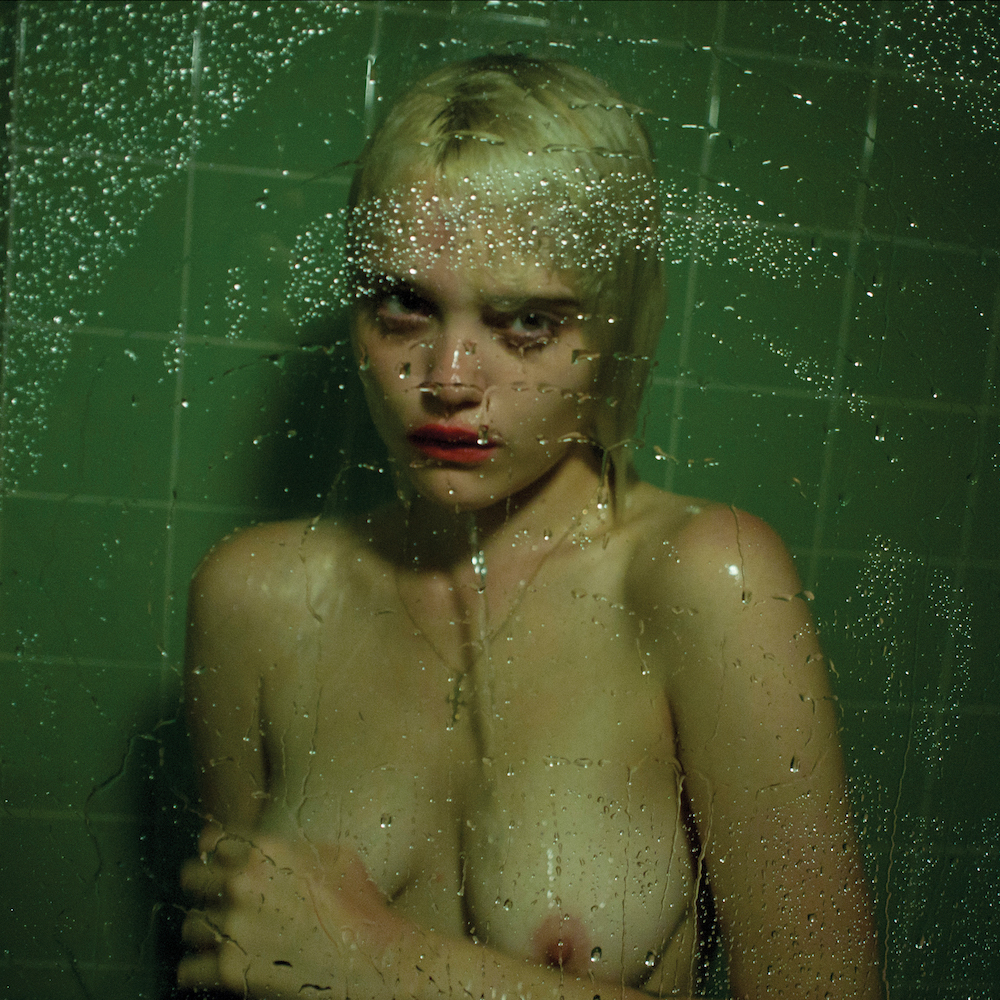
Sky Ferreira – Night Time, My Time
[Capitol]
In an alternate universe, Night Time, My Time is the first of several Sky Ferreira albums. But alas, we are the unlucky ones. It almost boggles the mind, though, that the pop perfection of “24 Hours” and “You’re Not the One” didn’t yield an instant green light for a follow-up record.
But let’s step back a little. In late 2012, the 20-year-old Sky released the Ghost EP, featuring the perfect “Everything Is Embarrassing”. 2013 found her recording and re-tooling Night Time, My Time up through her arrest on charges of possessing ecstasy and resisting arrest six weeks before the album’s release, making the lyrics to “I Blame Myself” even more affecting: “how could you know what it feels like to fight the hounds of hell? / You think you know me so well”. The album’s revealing cover, shot by Gaspar Noé, was certainly not what Capitol wanted to push through to the aisles of Walmart and Best Buy.
Ultimately, then, Night Time, My Time is an instance of an artist resisting major label constraints, regardless of the consequences. It’s why we have deep cuts like the Lynchian title track and the psychedelic march of “Kristine”, both holding their own amongst the poppy cuts. It’s a full-blooded album, as grimy as an L.A. street and as fun as cruising down one. – Ethan Reis
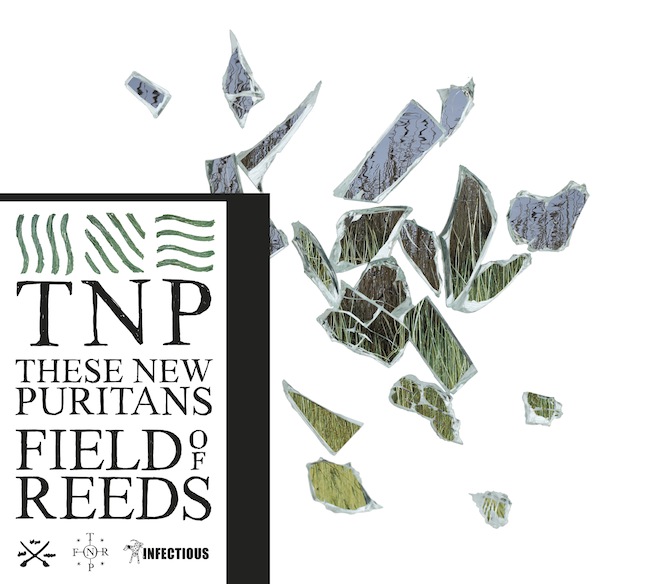
These New Puritans – Field of Reeds
[Infectious Music/BMG]
Britain’s resurgence of post-punk is often a story of its haggard winners, one hit wonders and premature ejaculations. Bands would rise and fall, some not even making it to a proper album, while its commercial heroes would lose success and end up parodies of themselves mere months after stardom. With its first and second wave gone, a third wave manifested, more gothic, fashion-minded and esoteric: The Horrors, Klaxons, S.C.U.M. and These New Puritans at the forefront. There really wasn’t a proper term to encapsulate them, so half of them were declared nu-rave to somehow encompass this strangely jagged, ominous post-punk.
But TNP would never fit this. Their initial shows saw them clad in chainmail tops and envisioning their future as intricate composers. After two albums of progressively complex angular songs that sounded like Matrix-infused Public Image Ltd., the trio stripped down the electronics and hired vocalist Elisa Rodrigues for an indescribable sound adjacent to Talk Talk’s latter work. Elegant, chamber jazz infused art-rock that often veers towards post-minimalism in how orchestral it feels.
Gentle and elegant, Field of Reeds finds a sensual tone, where quiet songs slowly evolve into hammering beats and aggressive danceable figurations. At times, it’s not all that far from Kid A, hinting at what deconstructed club music would have sounded like two decades, four decades, five centuries ago, had the abilities been there.
“V (Island Song)” unites so many worlds, with its piano-led opening, Boards of Canada-meets-Kasabian mid-section and its extended choral and organ outro that could easily have been expanded into its own feature length composition. “Spiral” slowly slowly entraps the listener with its use of choir, while “Organ Eternal” answers the curious who envisioned a collaboration of Thom Yorke and early Steve Reich. The sombre ballads “Dream” and “This Guy’s in Love with You” allow Rodrigues to take centre stage, her voice blooming in spacious realms, as the group experiments with recording techniques, while the title track finds modest bombast to end the sonic journey with the radiation of a sunset, cutting to silence. It’s transparent why there’s no work like this record: it’s impossible to replicate, nonsensical to plagiarise, outside of time. – John Wohlmacher

Tim Hecker – Virgins
[kranky]
There’s a surprising muscularity to Tim Hecker’s seminal album Virgins; a collection of experimental sounds containing sinew, bone, and other bits of random viscera – along with the expected circuital echolalia common to his work. Hecker chooses not to focus on how the genre can be subverted through technical means but approaches these hyper-expressive songs through an abjectly emotional lens.
Often considered to be the peak of his discography, these immersive and substantive electronic musings create instrumental narratives filled with acute paranoia, thundering regret, and moody introspection; they’re both direct in their appeal to emotional response and fluid in how they seek to draw out experiences joined by both joy and ache. Toying with how ambient music can inform aspects of devastation and rebirth, he glides between cavernous exultations and iridescent reflections. There’s a temptation to see them as broad statements on emotional upheaval and the process of creation, but Hecker’s quixotic approach to recording provides us little in the way of concrete evidence to make much of a definitive statement. These songs function as vast arrays of sound in which our own baggage acts as both compass and captor, pushing us further into their depths and removing any trace of how we got there in the first place. – Joshua Pickard

Vampire Weekend – Modern Vampires of the City
[XL]
When Vampire Weekend began recording what would become their third studio album, Modern Vampires of the City, they were very conscious that they wanted to move beyond the sound of their earlier releases. Ezra Koenig had said that if anything soundly remotely familiar it was quickly discarded, and the band would move on to something else. This sense of spontaneity and experimentation is evident throughout Modern Vampires of the City, an album of warped pop genius and indie rock reinvention. And with help from producer Ariel Rechtshaid, the album became a conduit for them to live vicariously through each other’s creativity and to establish a new communal language through which they could communicate with one another and to anyone within earshot.
There is a prevalent tension littered across these songs, periods of anxiety and weariness offset by some of the band’s catchiest and most affecting melodies. Veering between baroque pop radiance, folky ruminations on grief and mortality, and buoyant rock reflections on adulthood, the album is Vampire Weekend at their most introspective, burdened by consequence but finally able to parse out purpose in a world filled with significant triviality. And when faced with these more mature themes, Vampire Weekend don’t simply shrug their shoulders; they carry that weight and find strength in the company of one another. – Joshua Pickard

Waxahatchee – Cerulean Salt
[Don Giovanni]
If Waxahatchee’s most recent solo LP, 2020’s Saint Cloud, captured the sound of newfound sobriety and clarity, as Katie Crutchfield entered her 30s, 2013’s Cerulean Salt captured the angst of adolescence filtered through a drunken haze. Tales of addiction (“Brother Bryan”), unsustainable relationships (“Blue, Pt. II”) and, longing (“Lively”) illuminate this collection of lo-fi indie rock tunes. Sonically, the LP recalls Liz Phair’s early-90s work, but is rendered distinct by Crutchfield’s story-telling, which alternates between crushing metaphors (“A swan dive to the hard asphalt”) and stark confessionals (“I’m ruled by seasons and sadness that’s inexplicable”).
The LP’s best song, “Swan Dive”, expertly mines the pits of despair – of hidden empty bottles, self-destruction and loneliness – while still holding onto hope for a better tomorrow. “I will grow out of all the empty words I often speak” promises Crutchfield – but her words on Cerulean Salt aren’t empty; they’re rich, evocative and lived-through. – Tom Williams
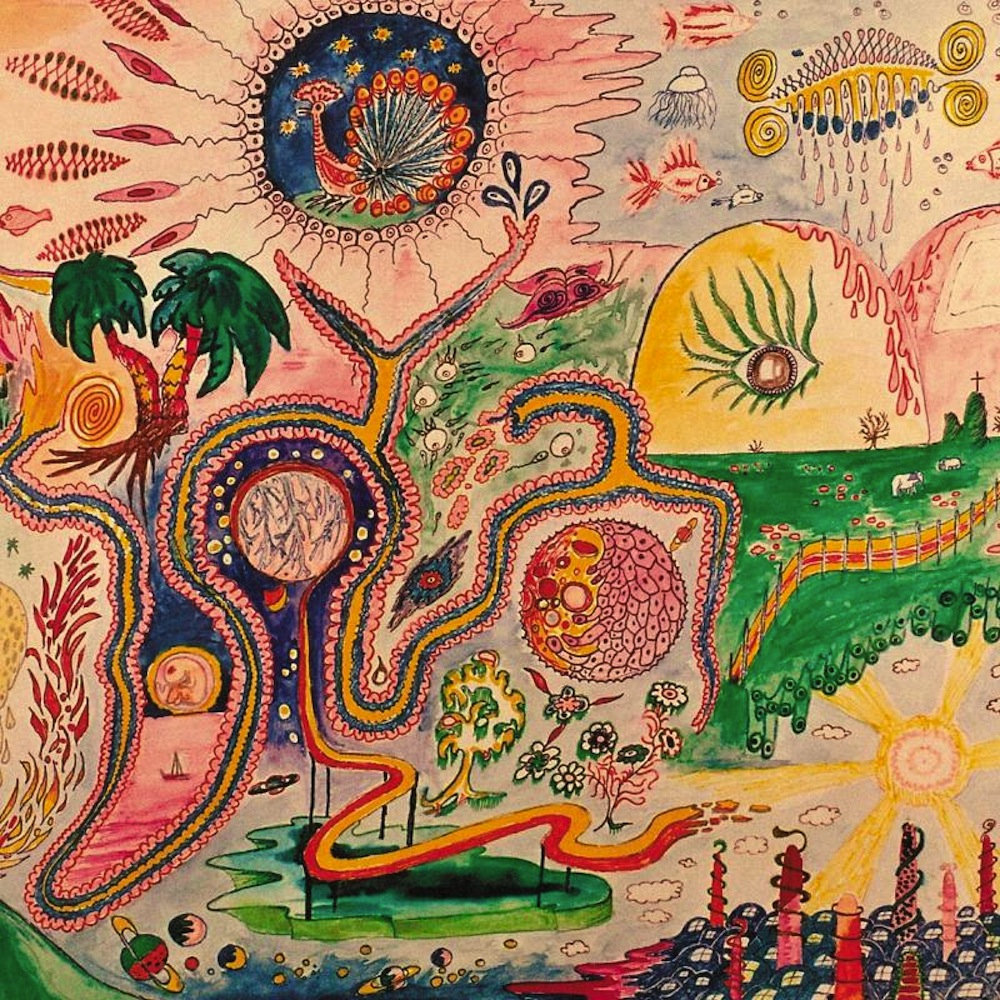
Youth Lagoon – Wondrous Bughouse
[Fat Possum]
Sparkling synths, crisp yet sleepy beats, weighty yet pop-inflected interludes, crescendos and decrescendos, and hints of anxiety-inducing discord. This is the world of Wondrous Bughouse, the second album from Boise, Idaho-based Trevor Powers, aka Youth Lagoon.
Second track “Mute” is representative of the album’s compositional aesthetic: melodic refrains that are ethereal and mechanistic, as if Powers is torn between the pastoral and dystopian yet determined to perch in neither. Sustained ambivalence and resistance to convenient resolutions are particularly notable.
Though vocals are present throughout the sequence, Wondrous Bughouse’s emphasis is instrumental. That said, with “Dropla”, Powers boosts his vocals in the mix, placing his songcraft on centerstage. “You live in a cave / one made of drapes”, he sings, addressing isolation, mortality, and perennial suffering, themes explored throughout the set.
The project closes with “Daisyphobia”, at once an elegy for “mortals on the run” and an ode to our divinity (“we’re children of one”). The piece prompts an ecstatic response while triggering a distinct sense of disorientation, sonically metaphorizing our earthly life and what our experience might be post-demise.
Produced by Ben H. Allen, who helped Animal Collective achieve “the celestial” without compromising their quirky experimentalism (Merriweather Post Pavilion, 2009), also assisting Deerhunter as they added “shimmer” to their clangorous pop (Halcyon Digest, 2010), Wondrous Bughouse shows Trevor Powers at his most ambitious, forging templates that would inform, and to a degree define, his subsequent work. – John Amen
Listen to a Spotify playlist of our top track from each album.

